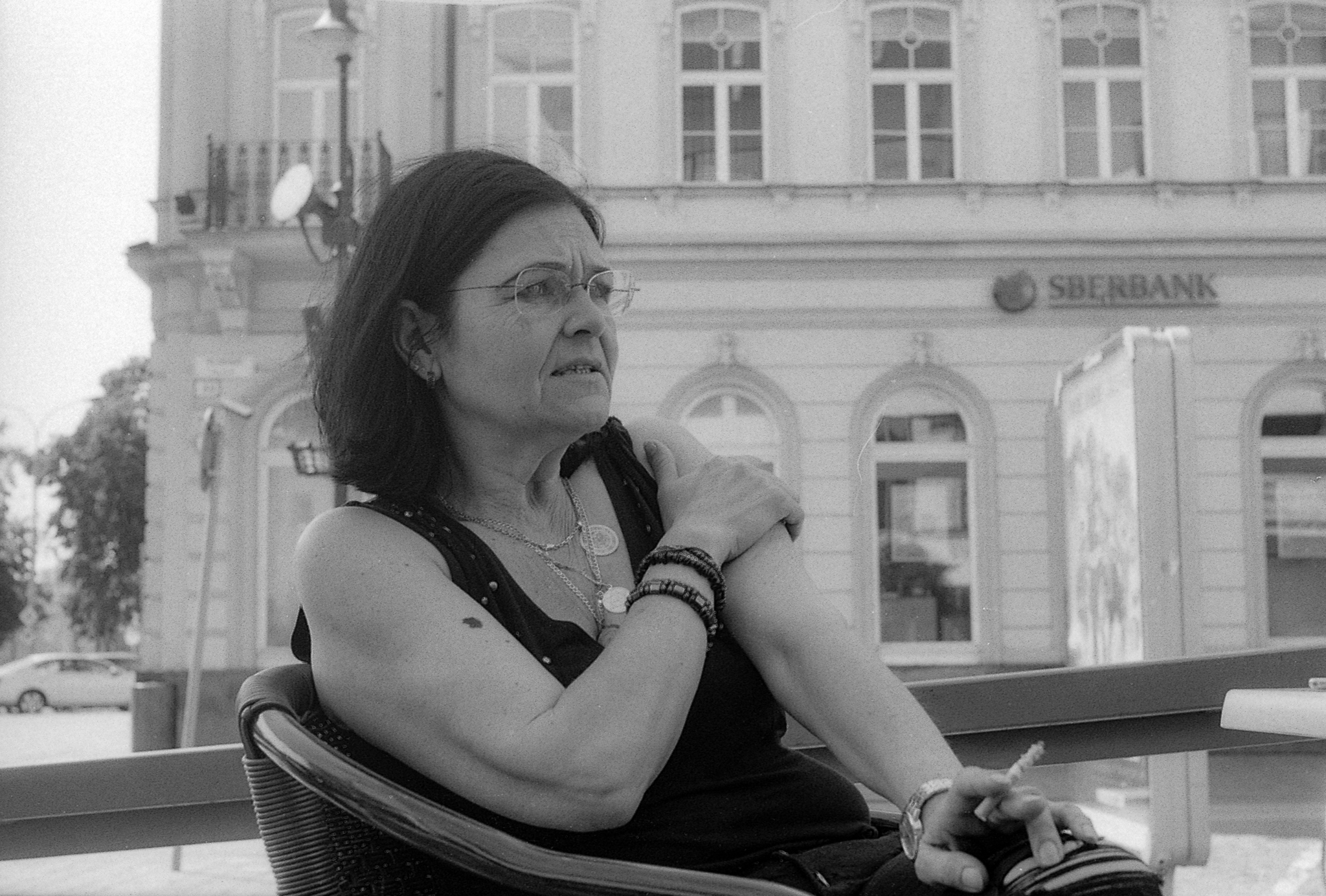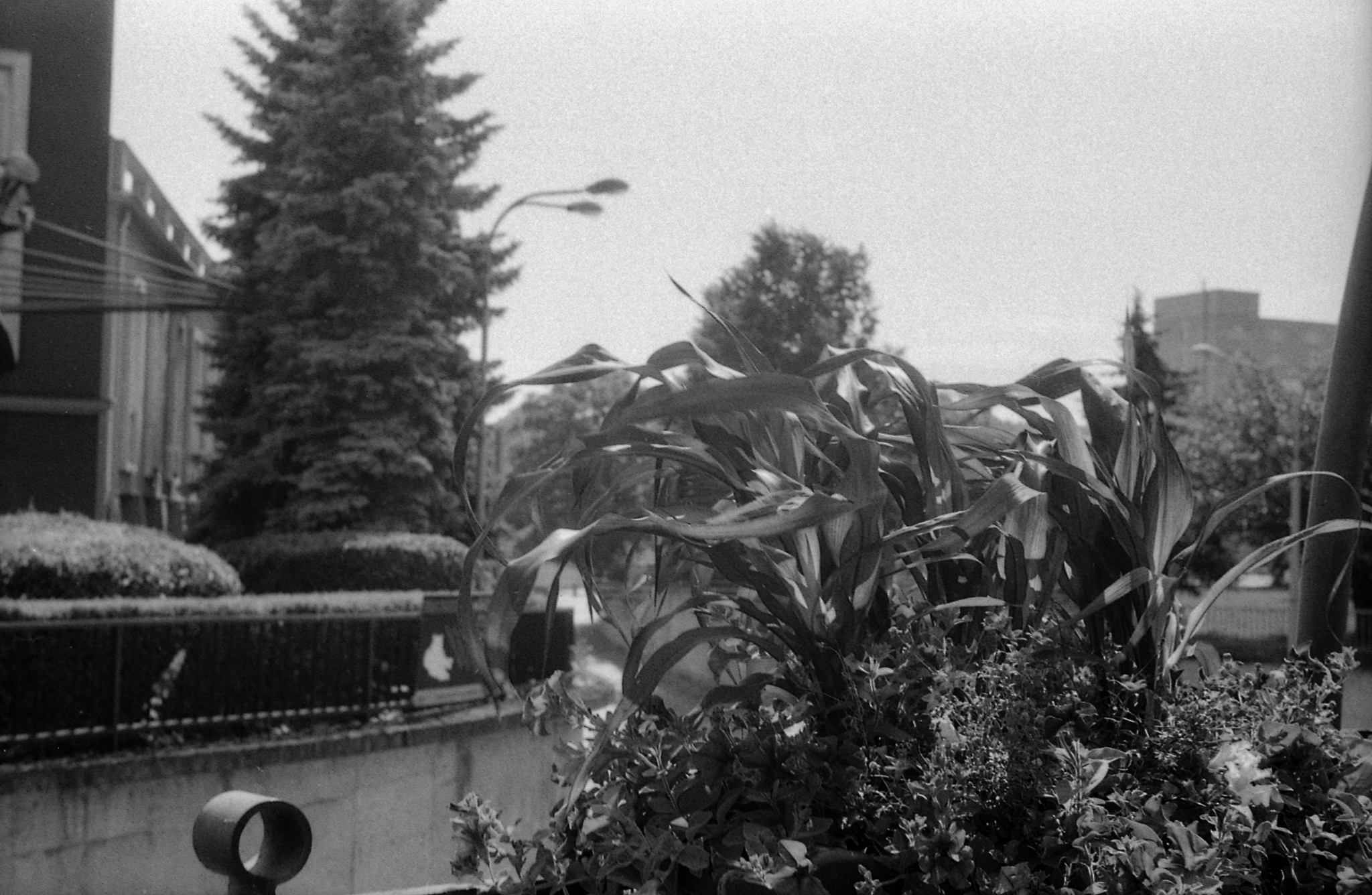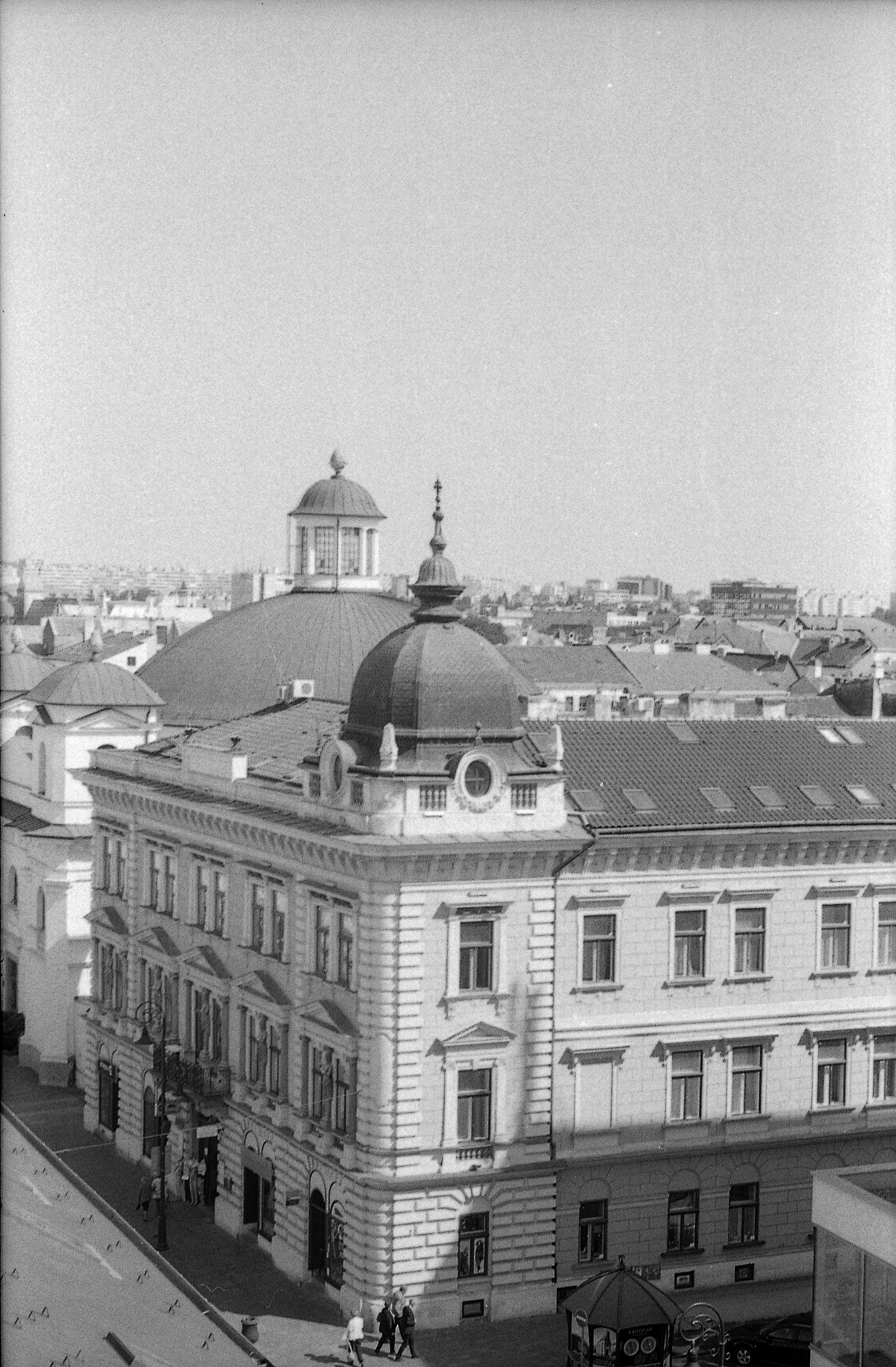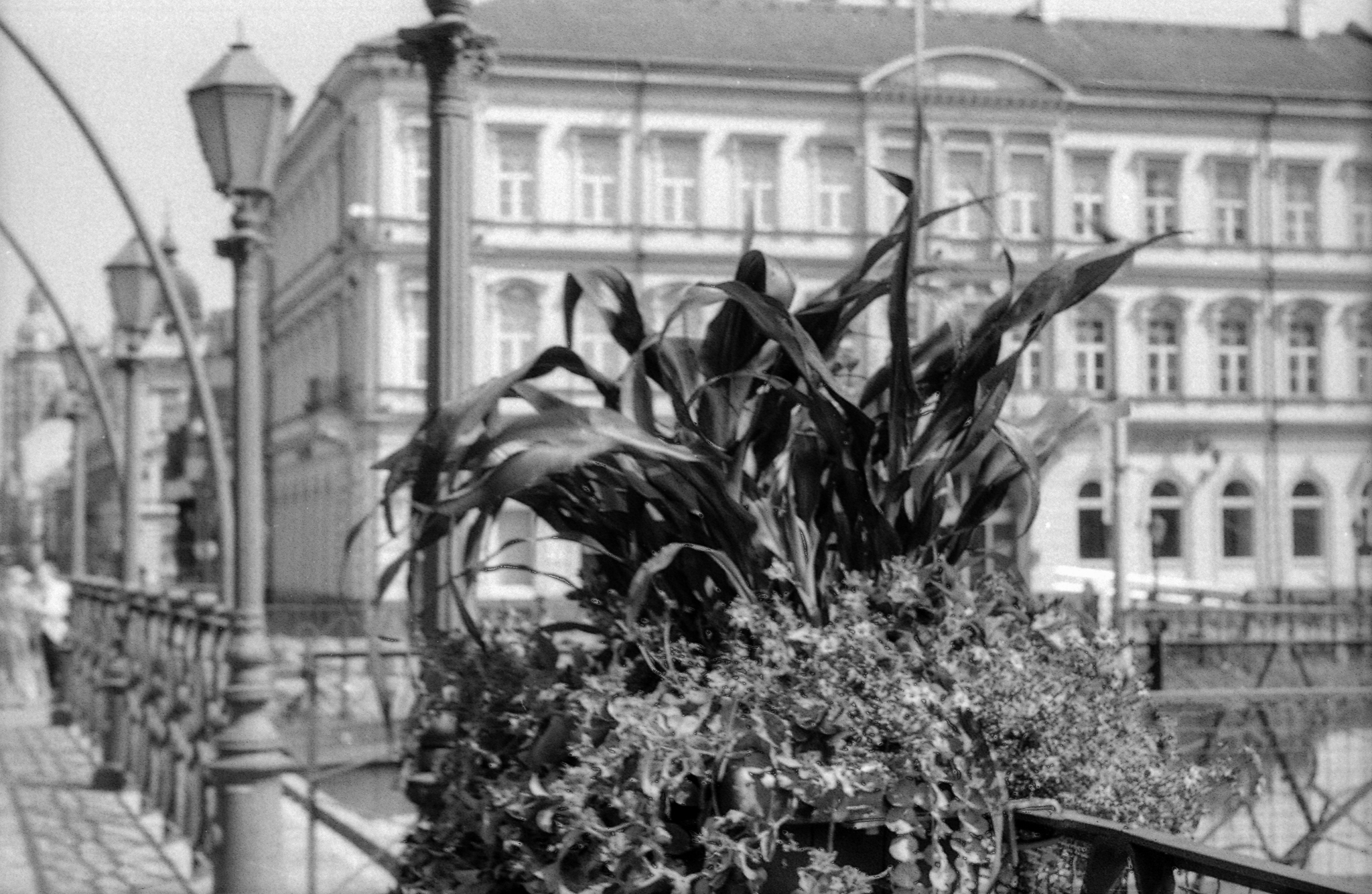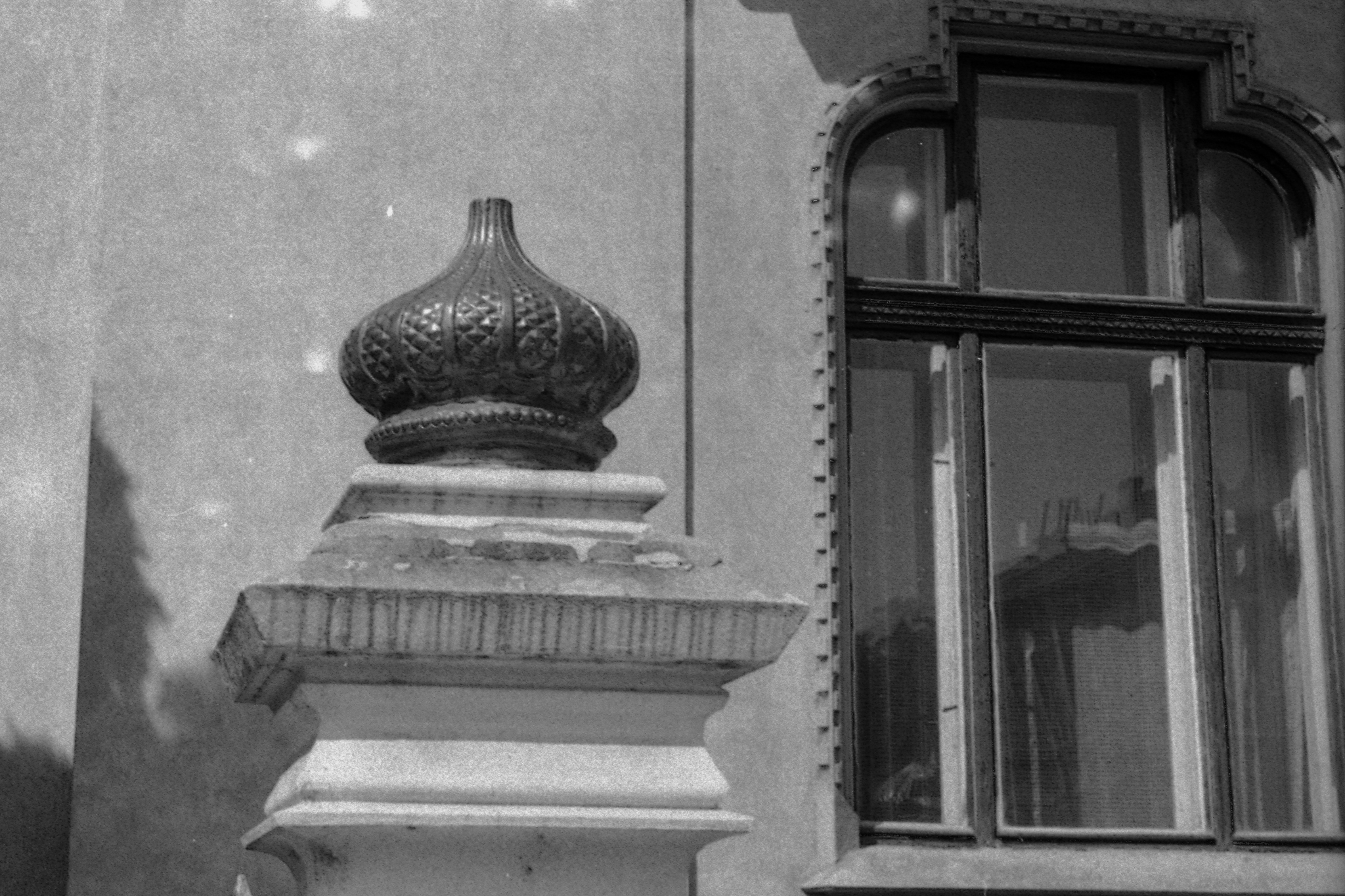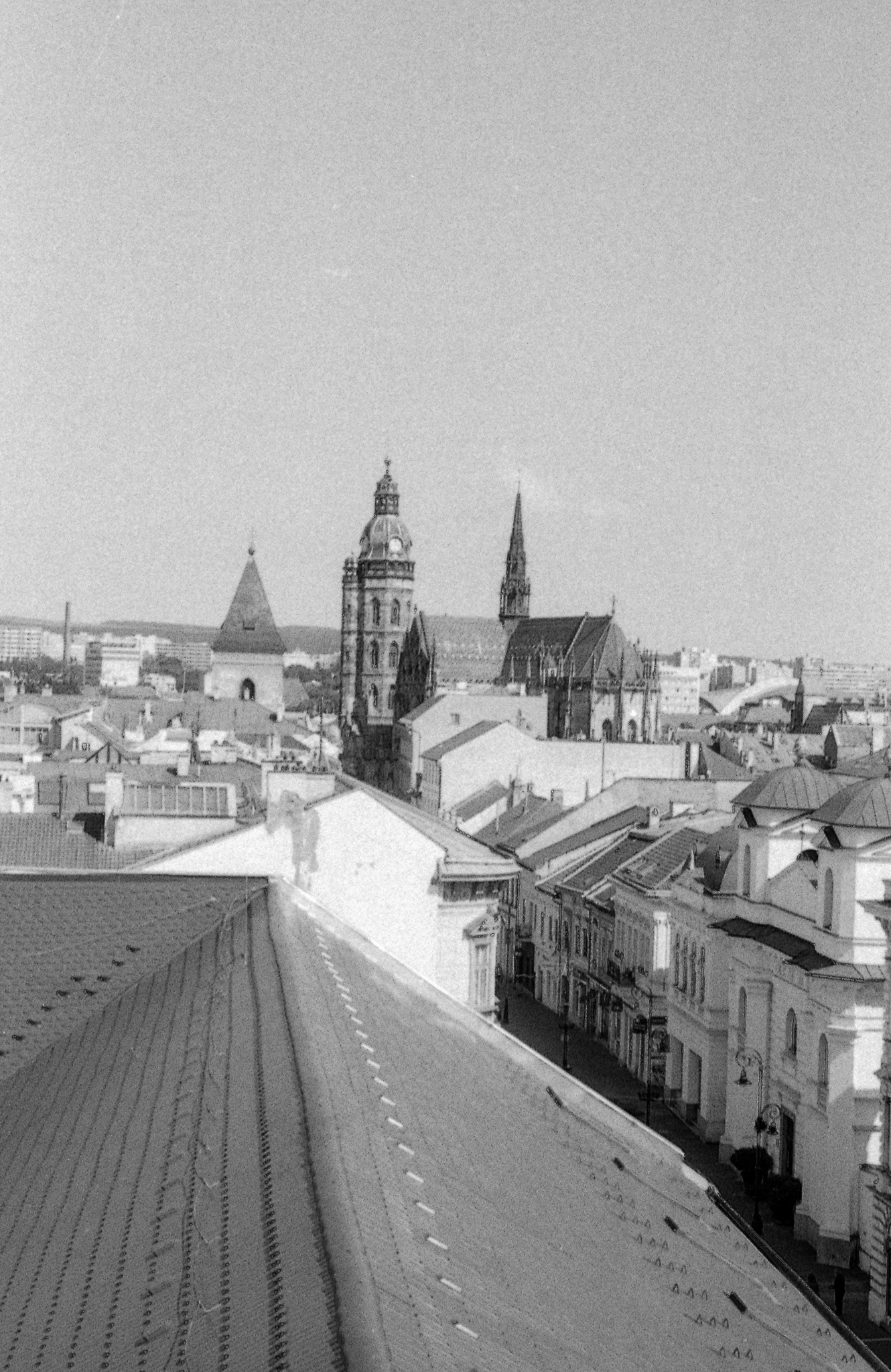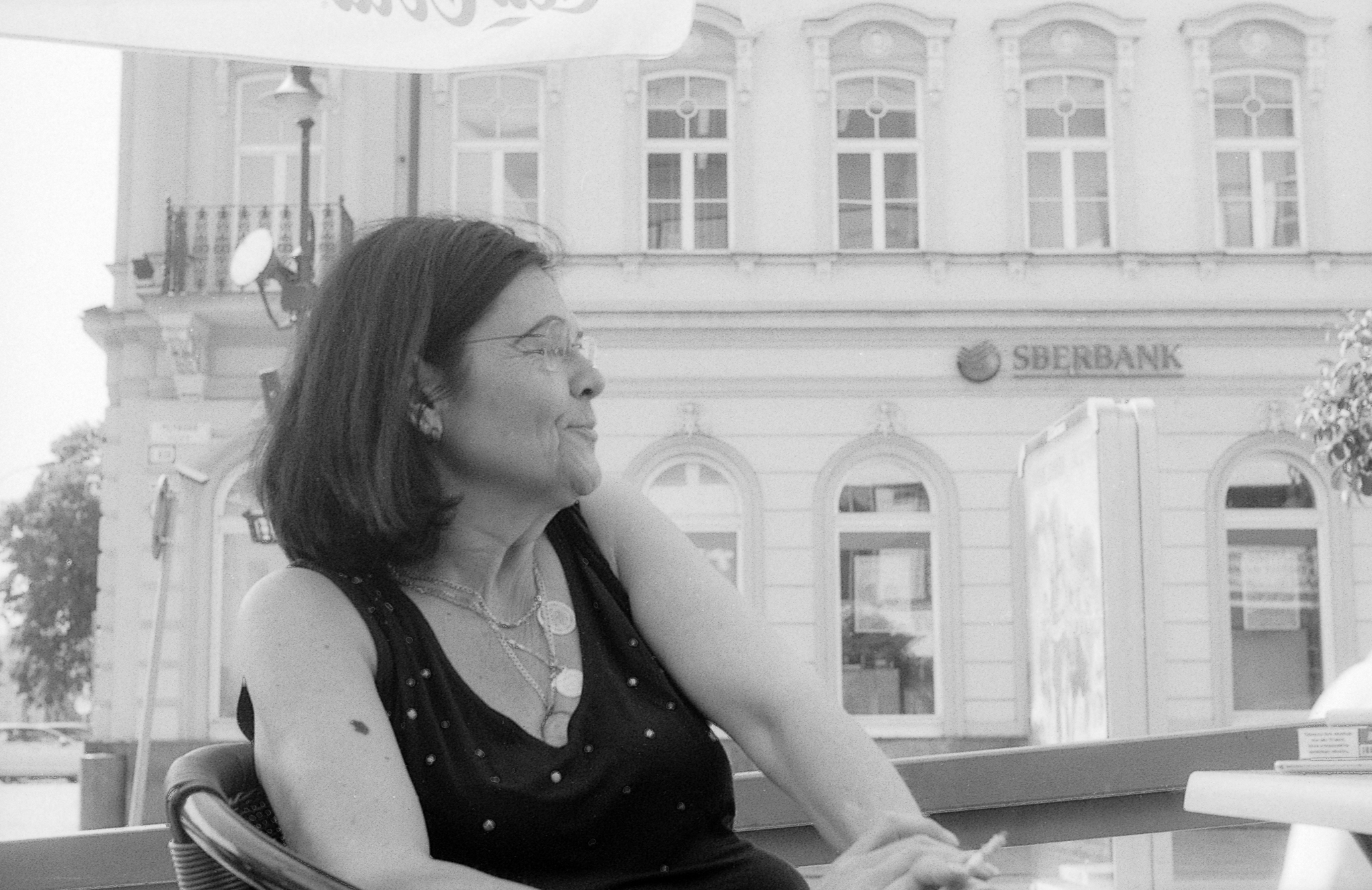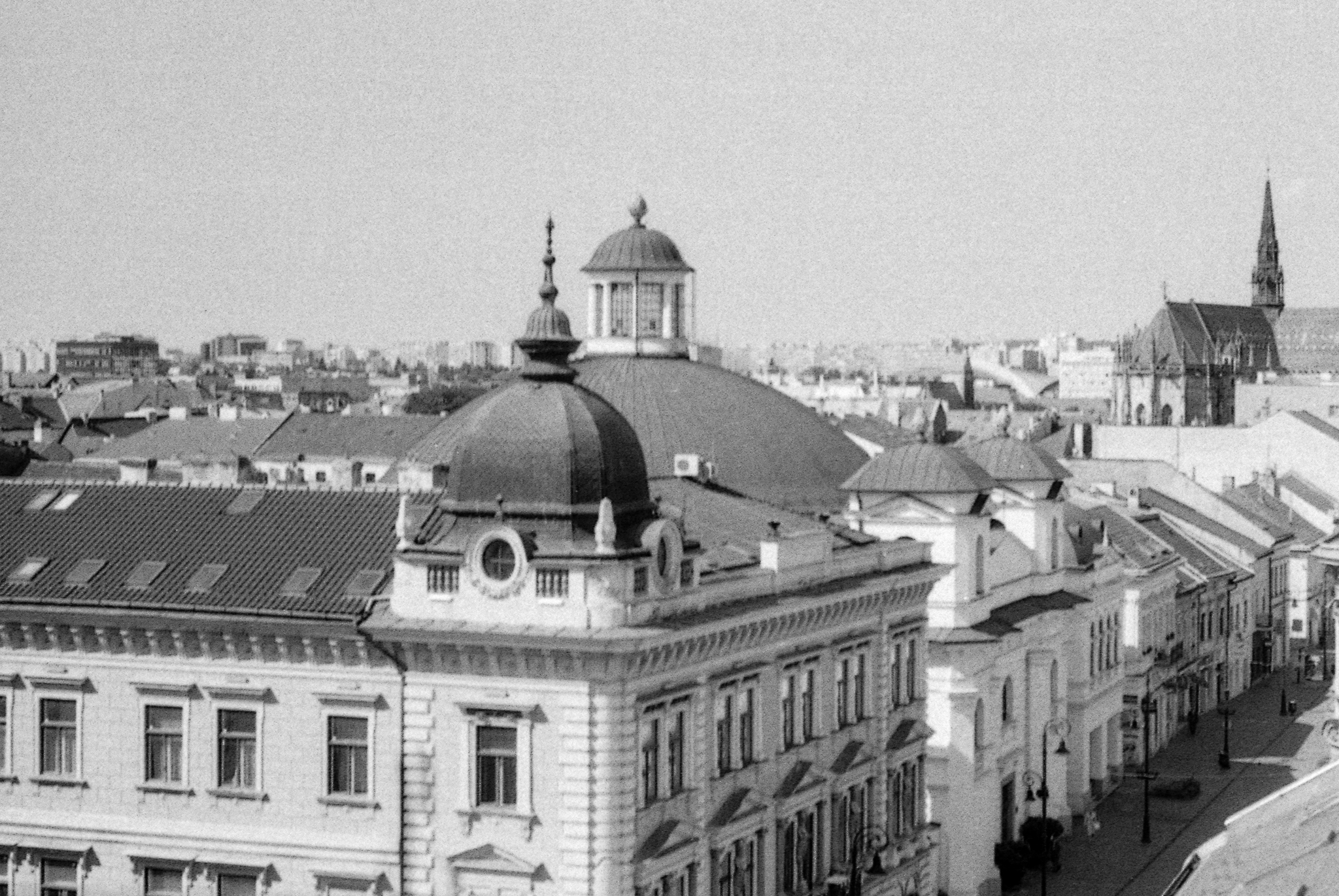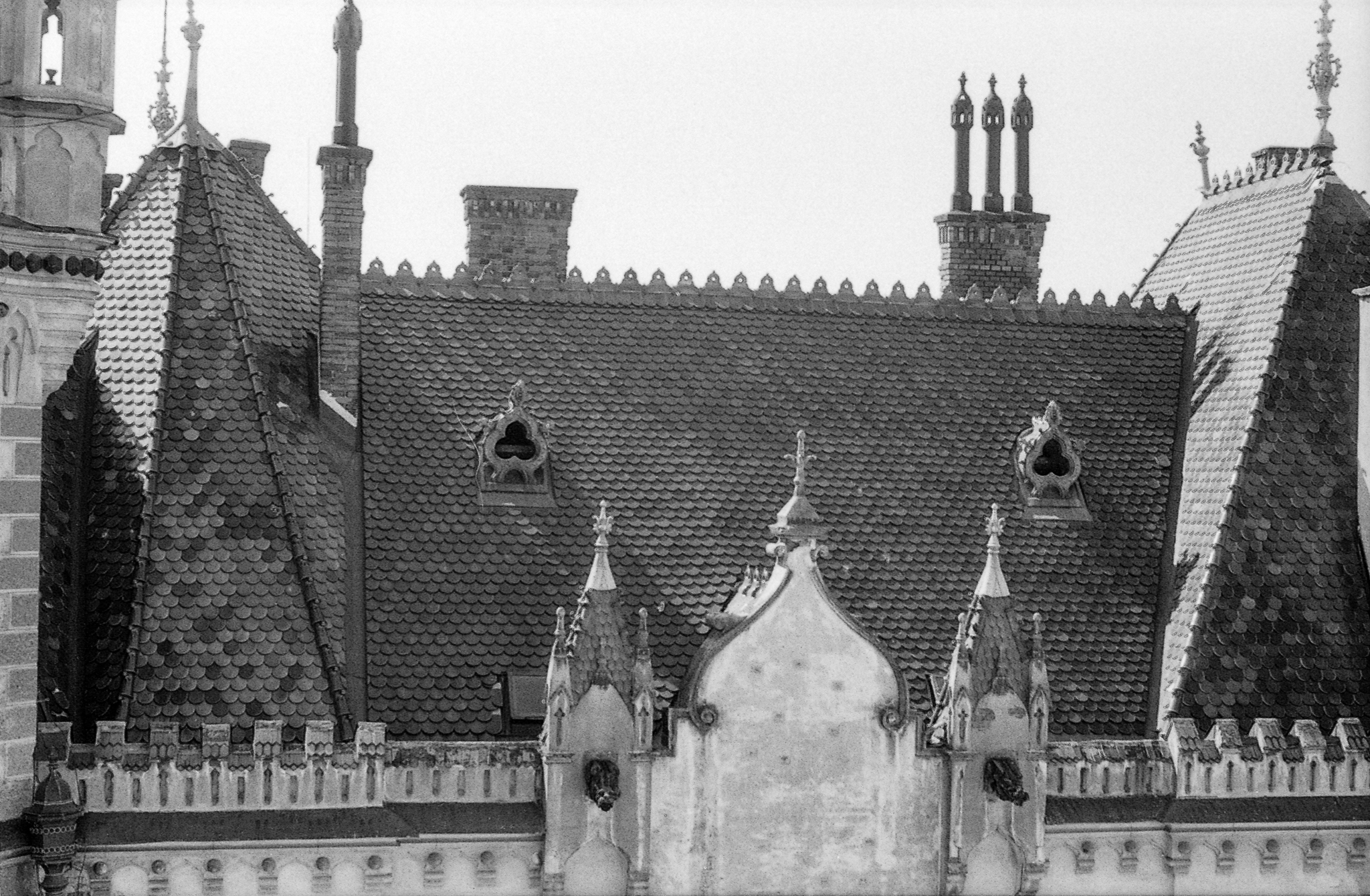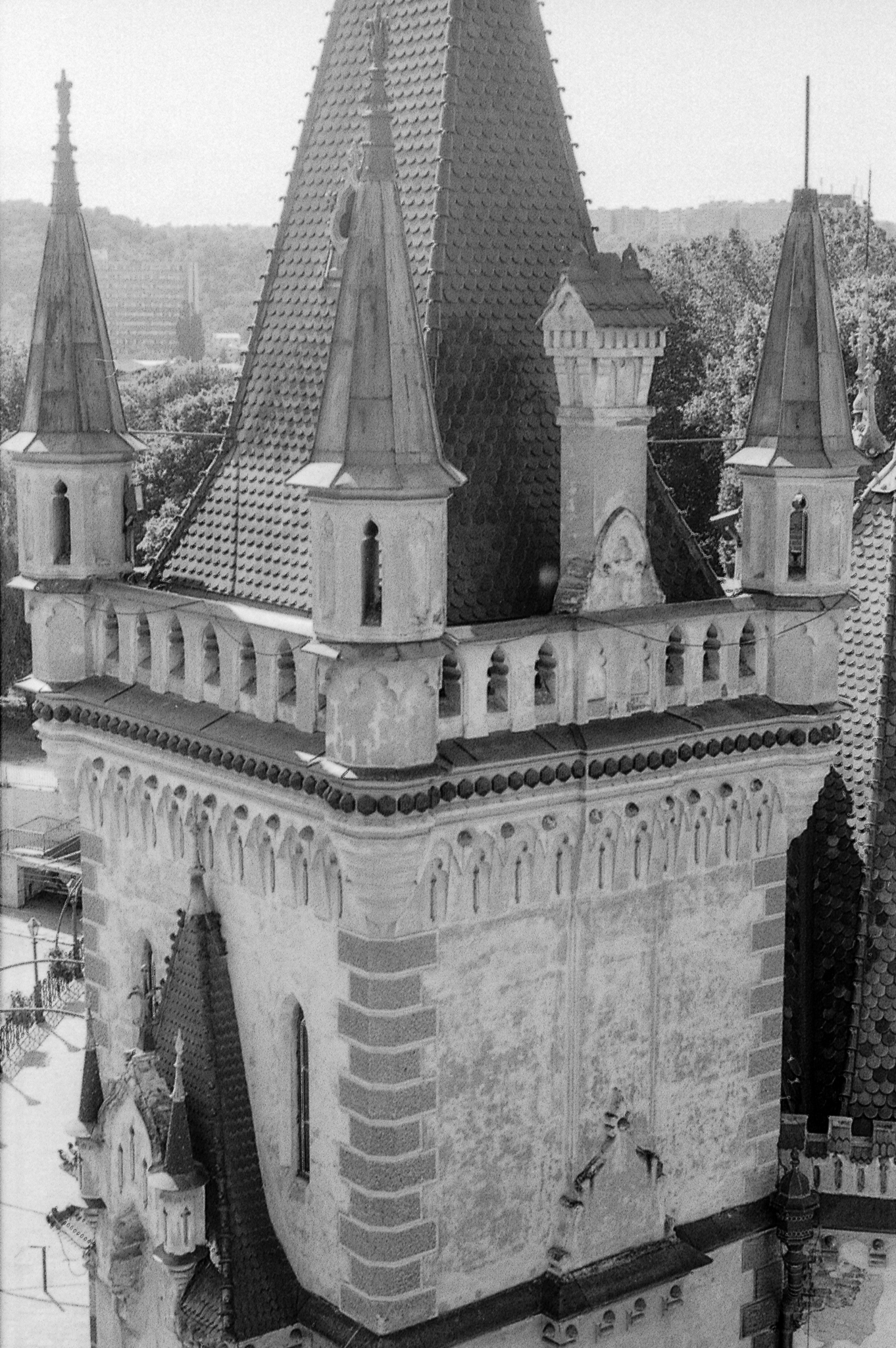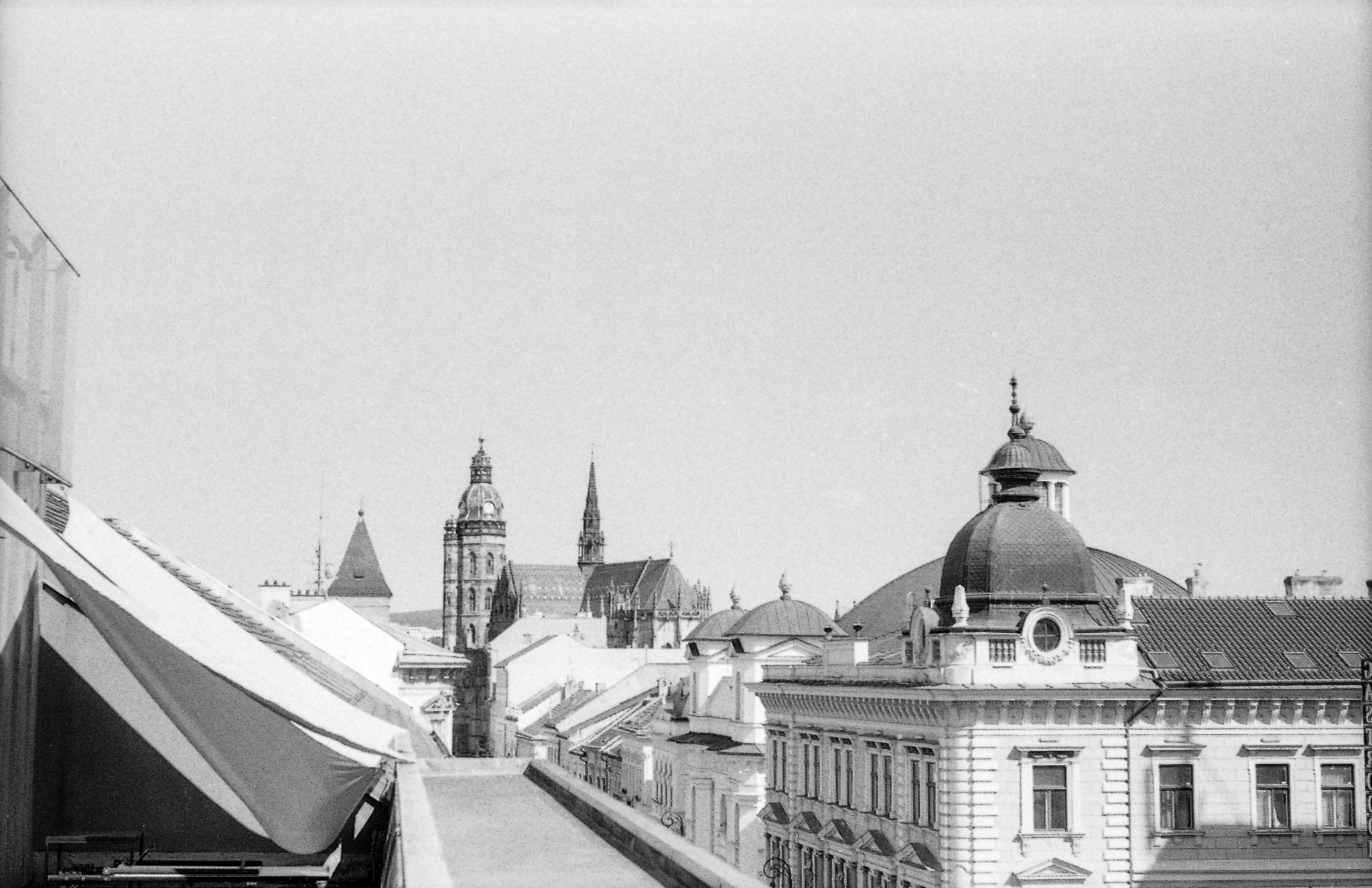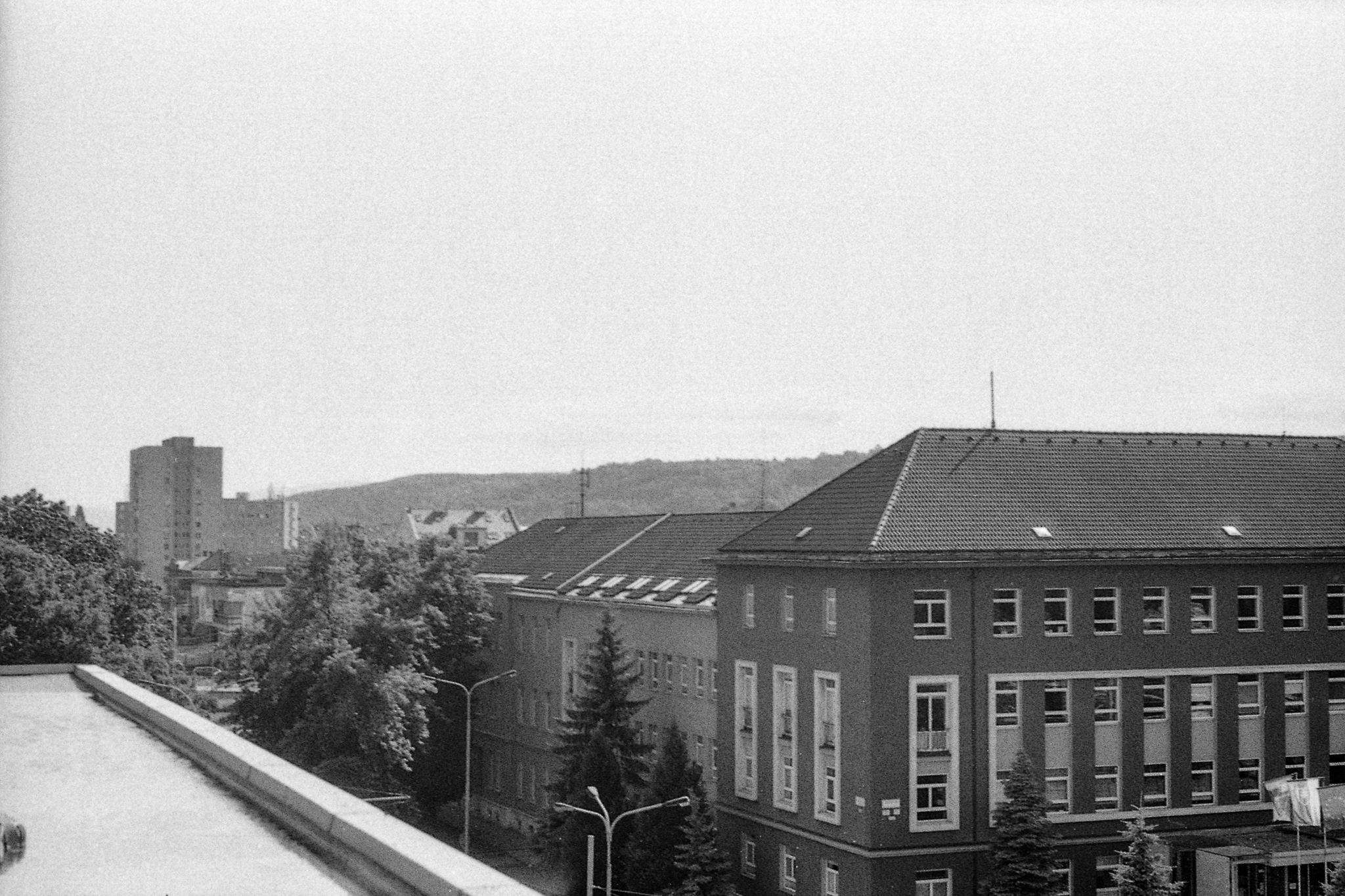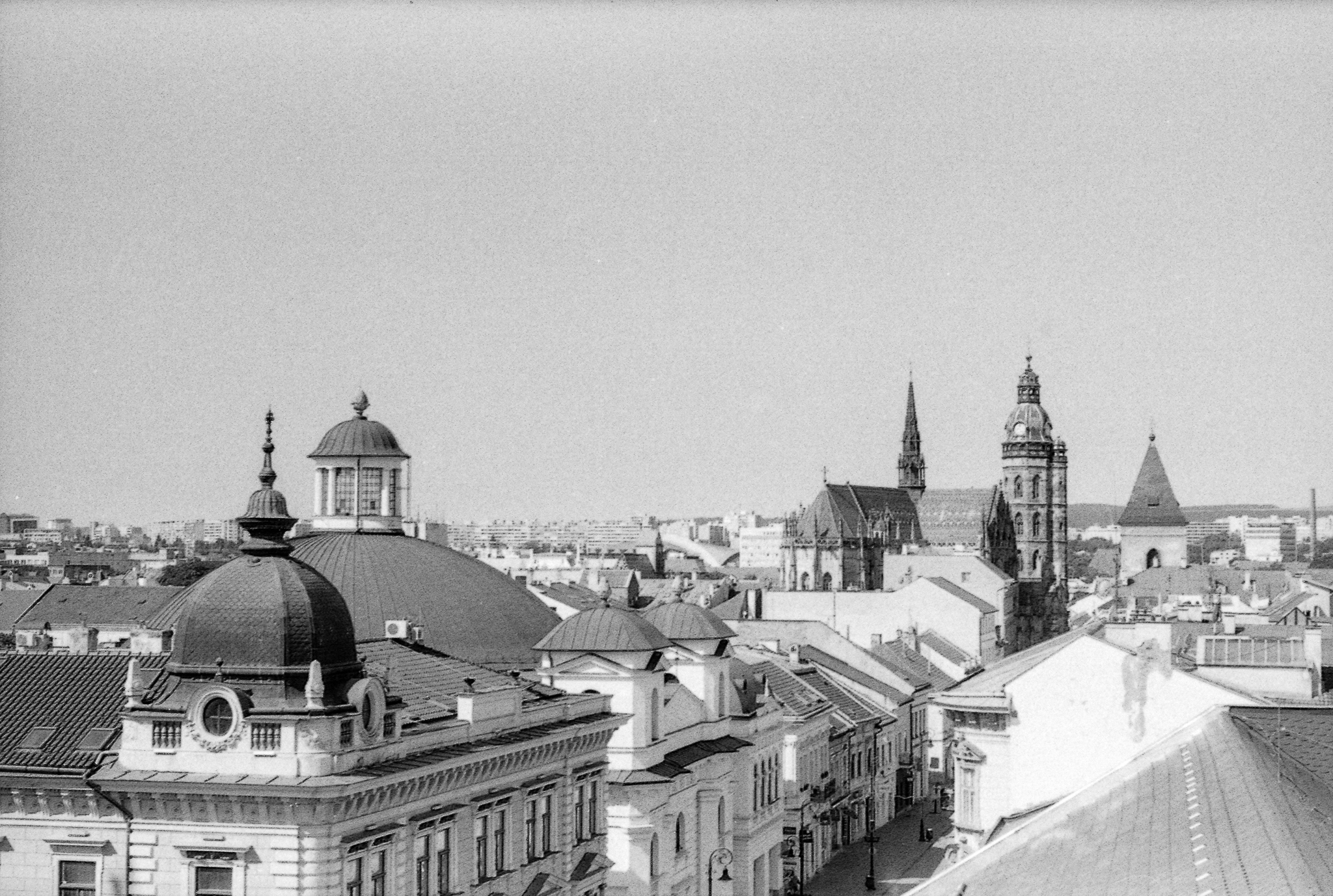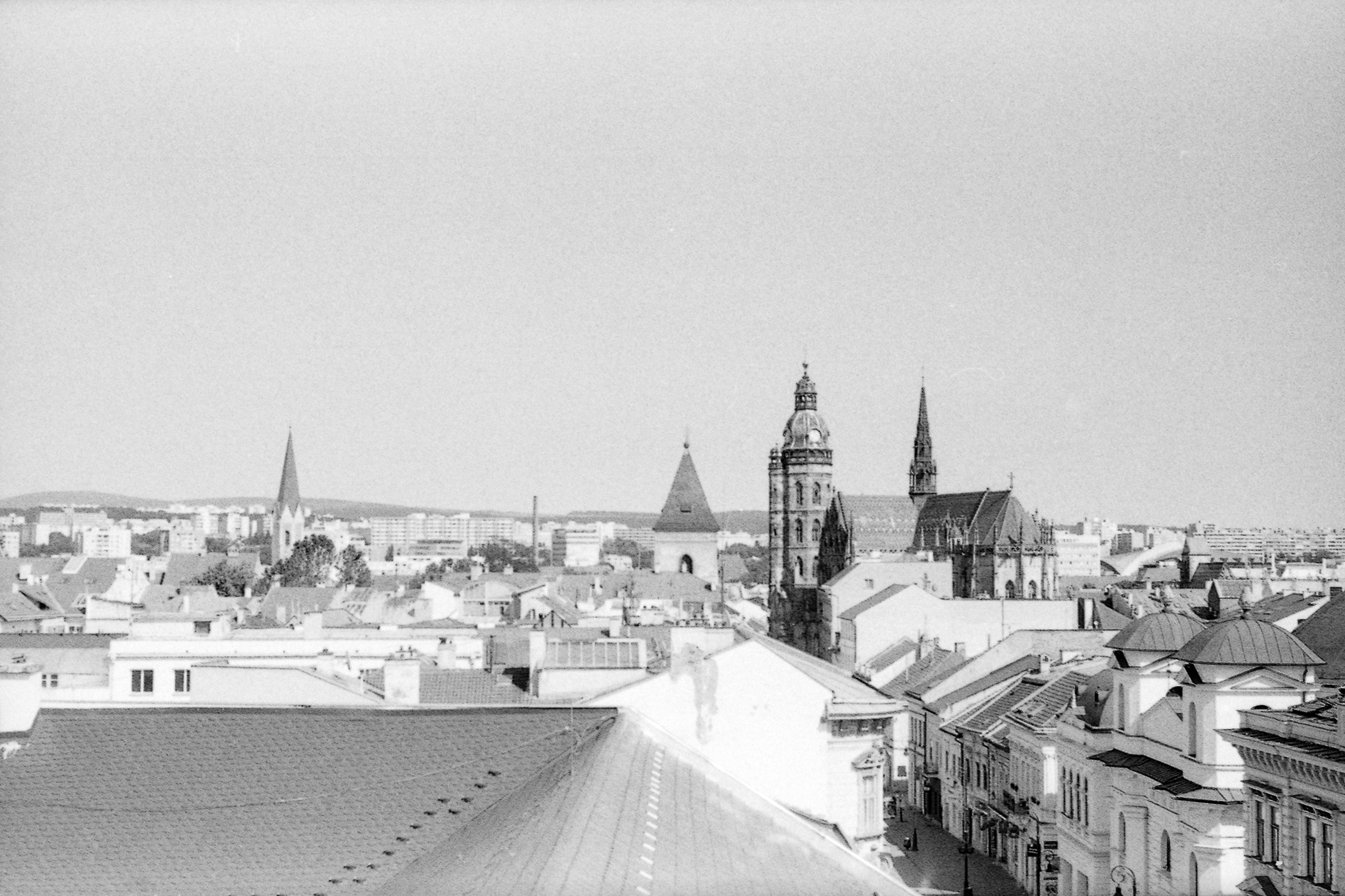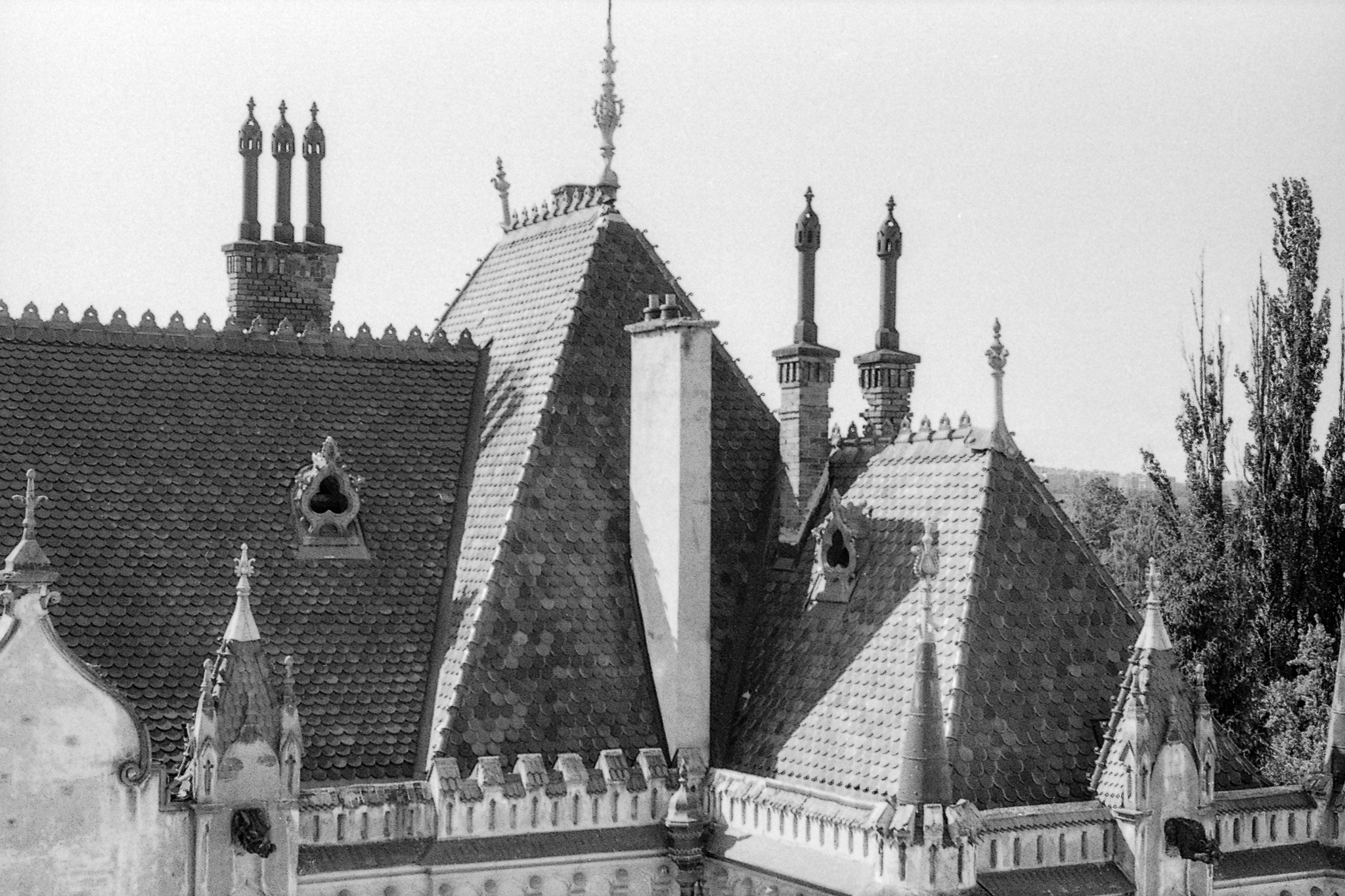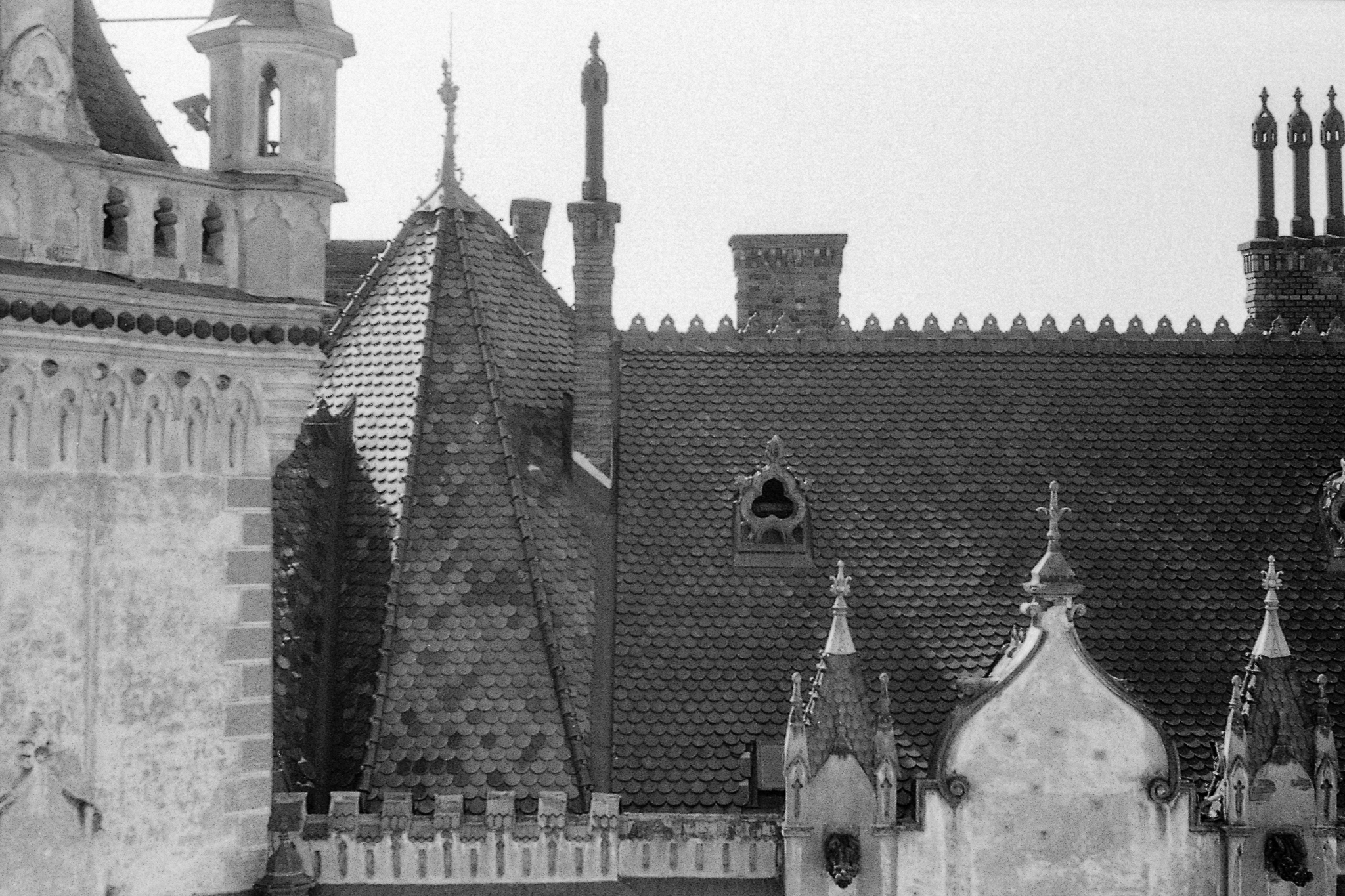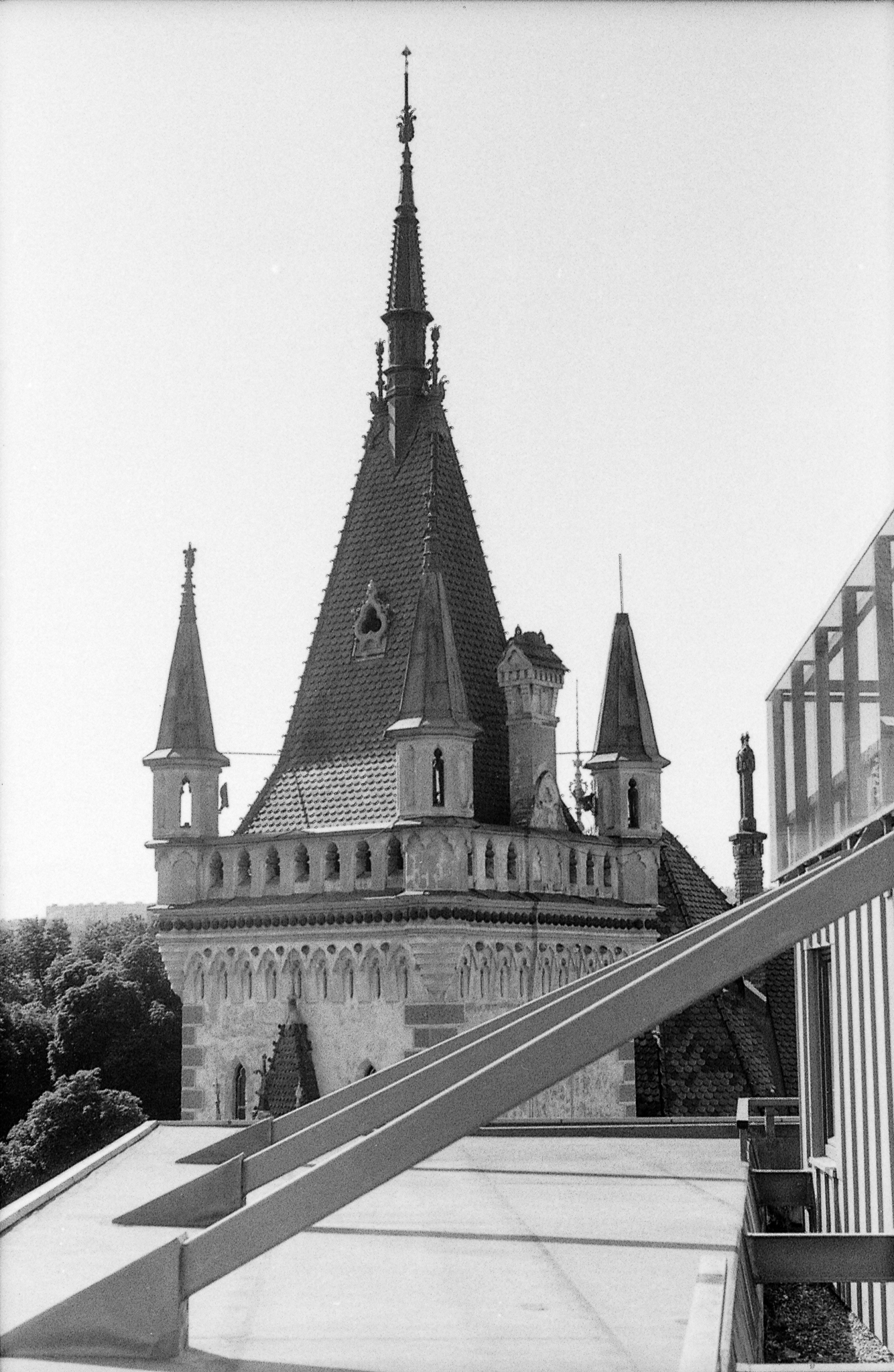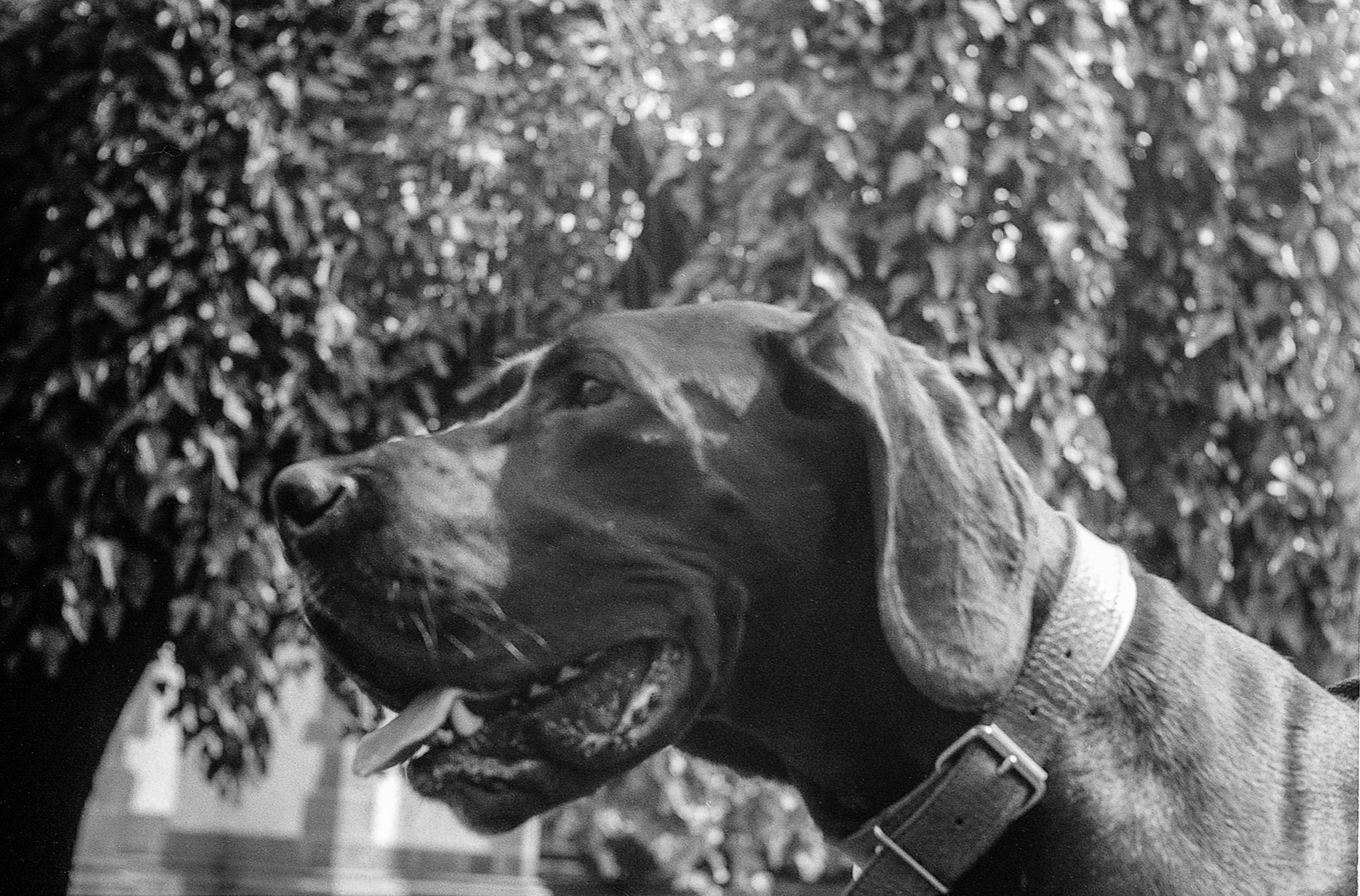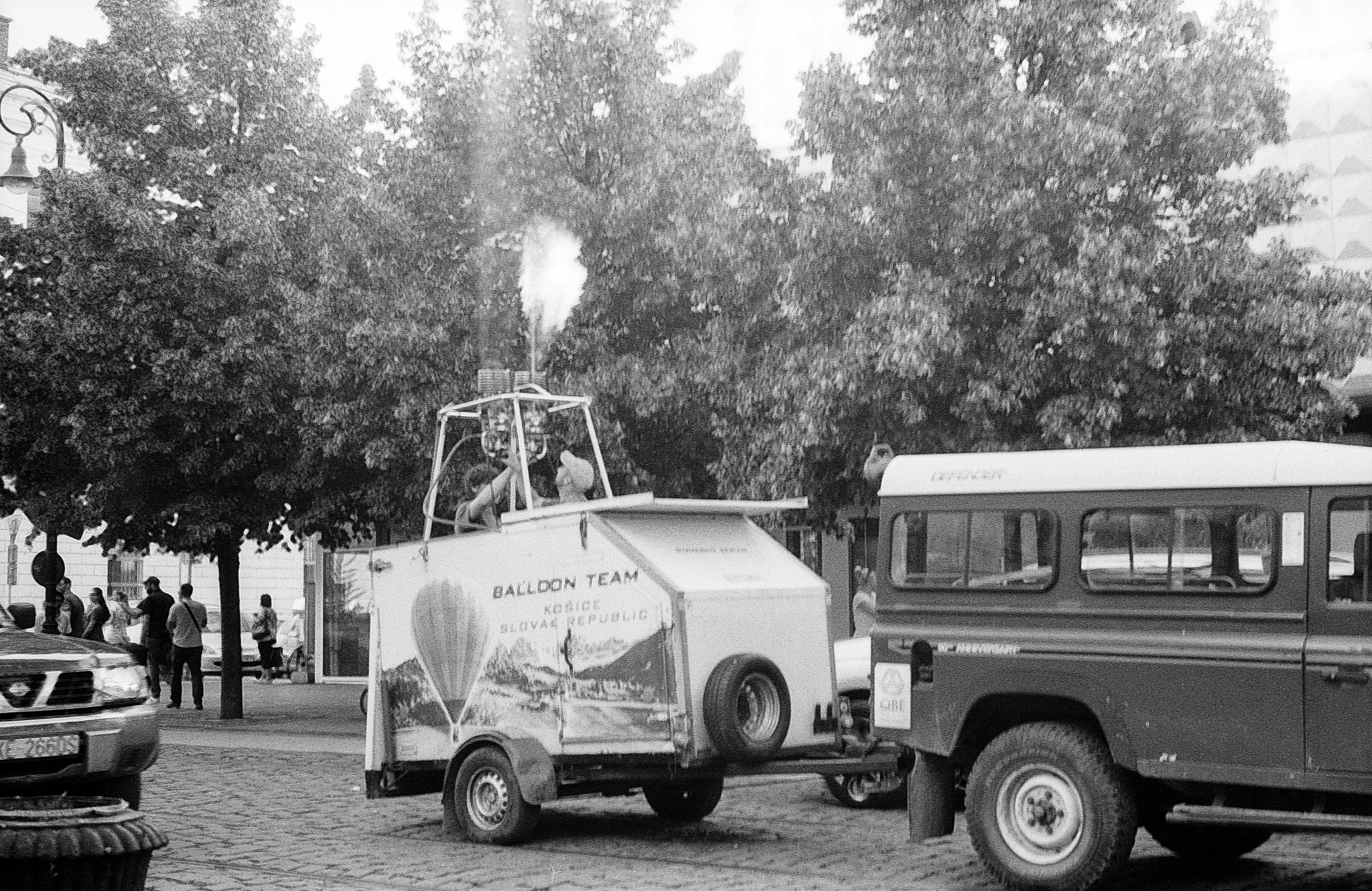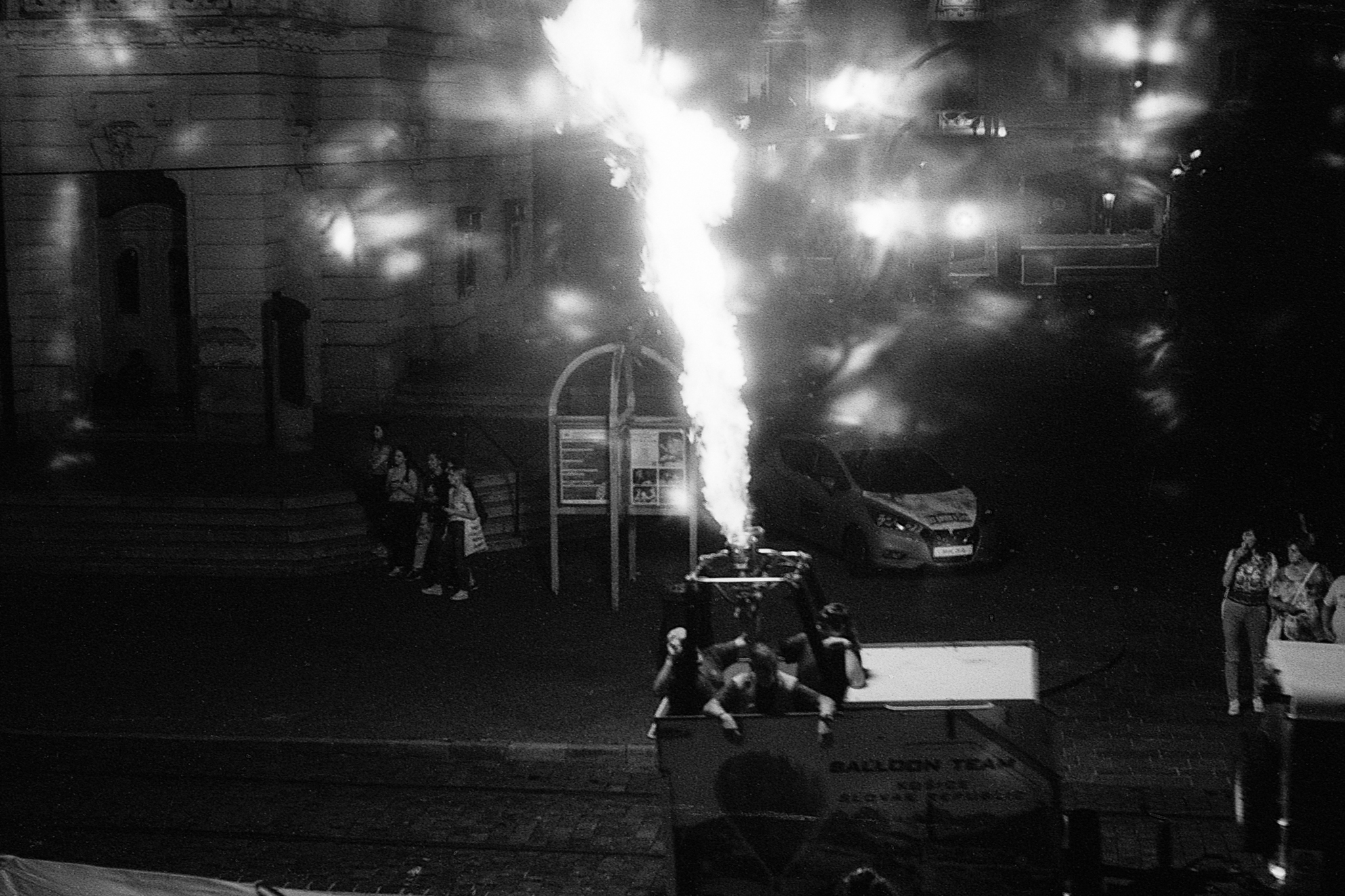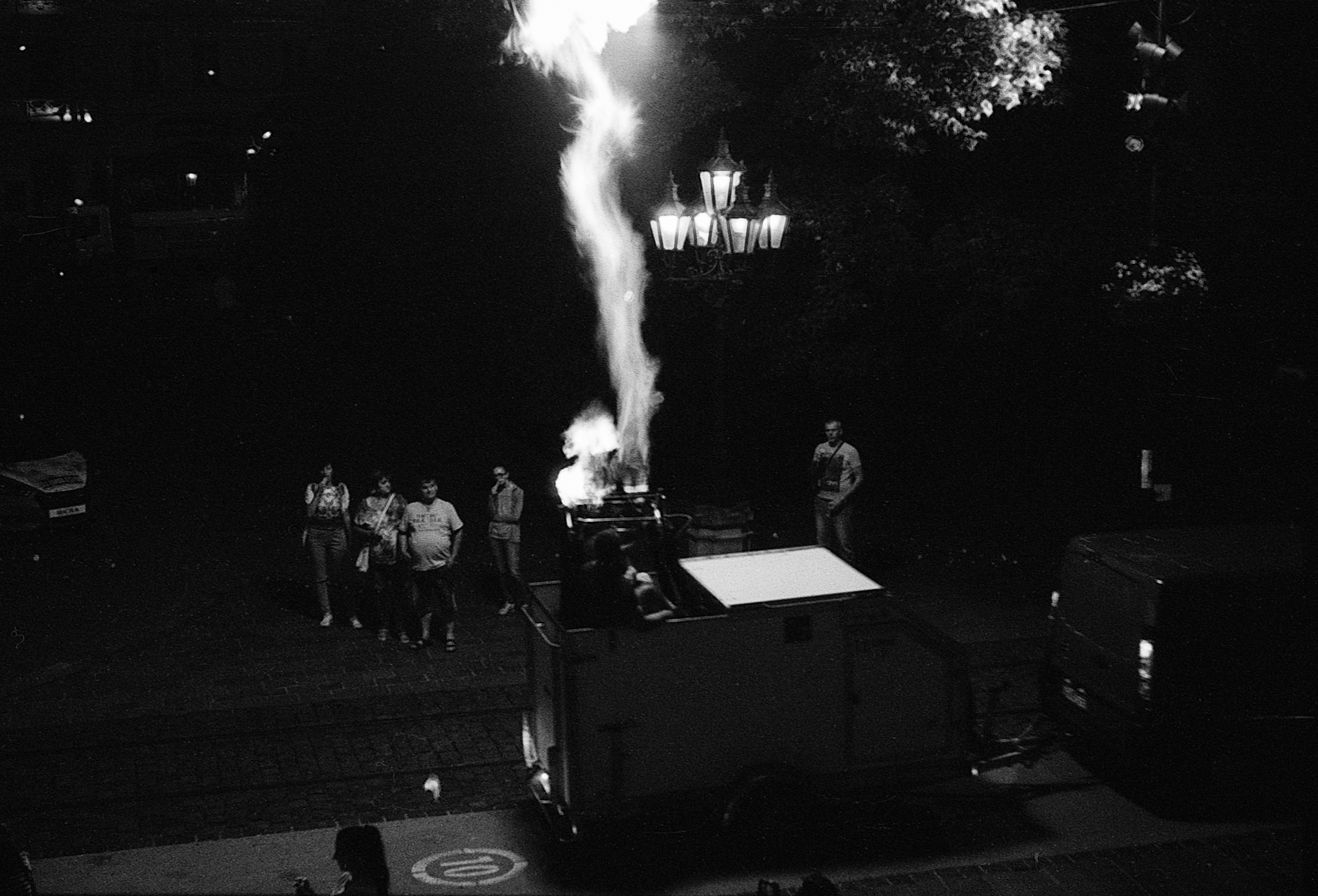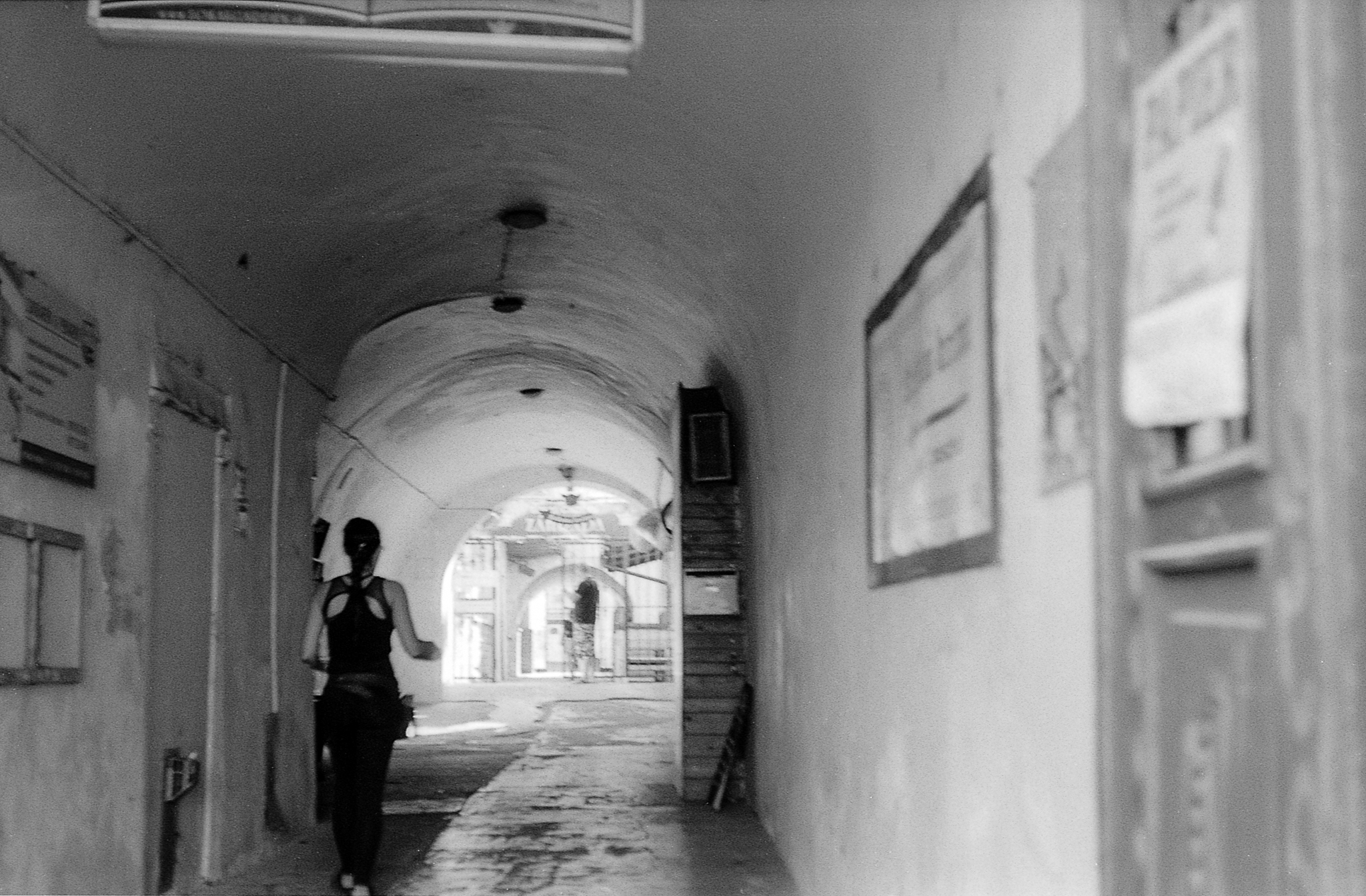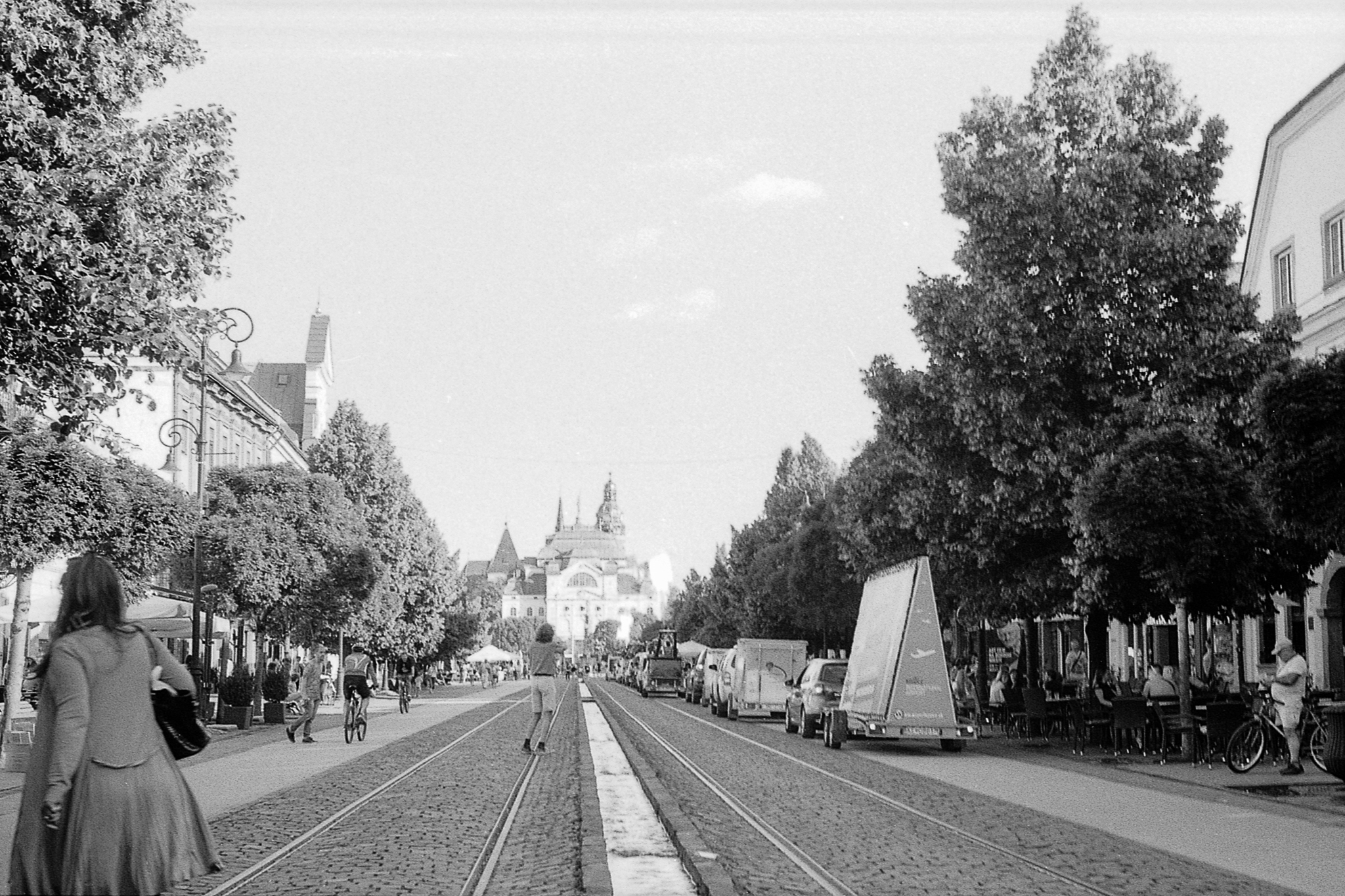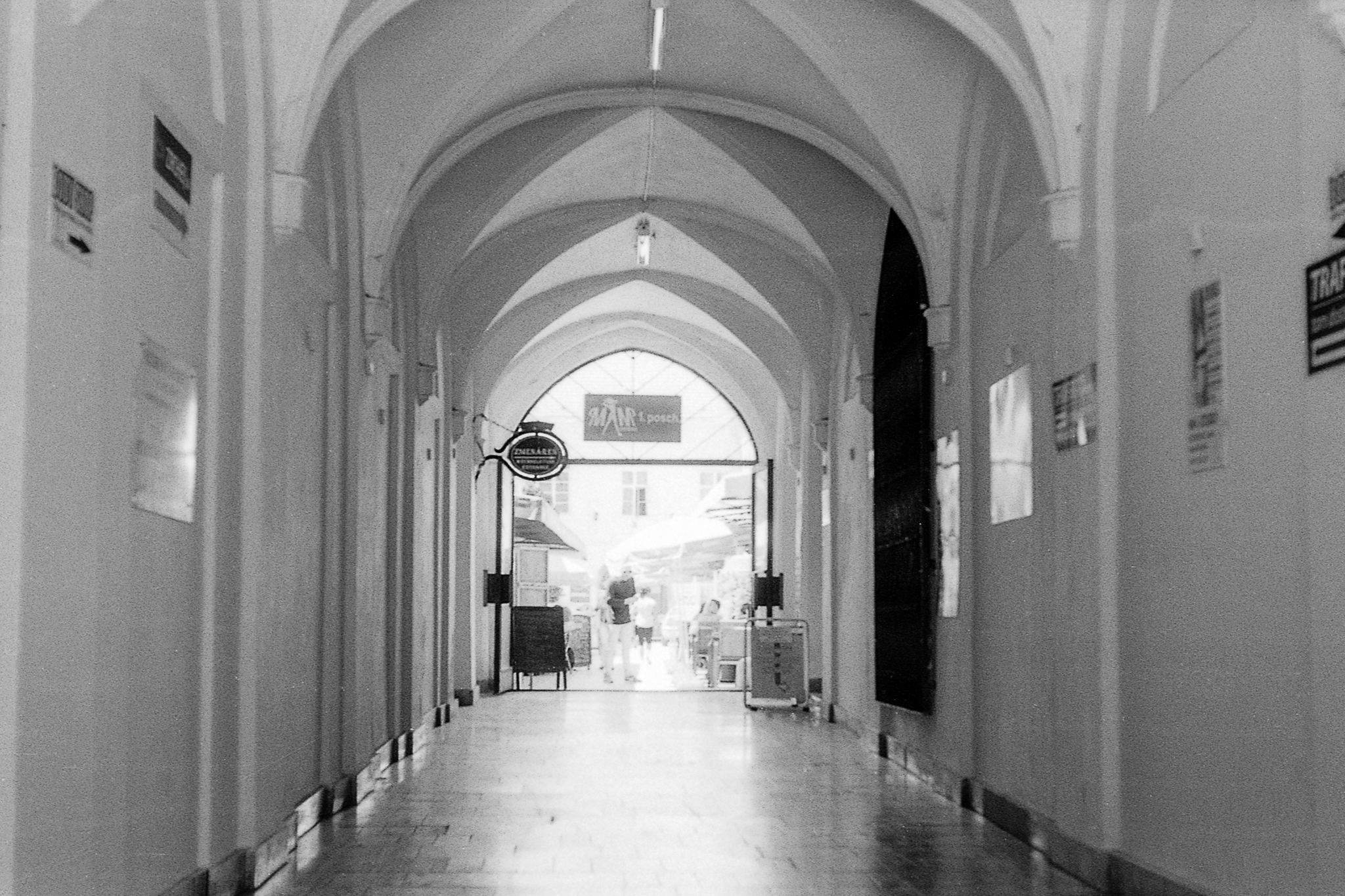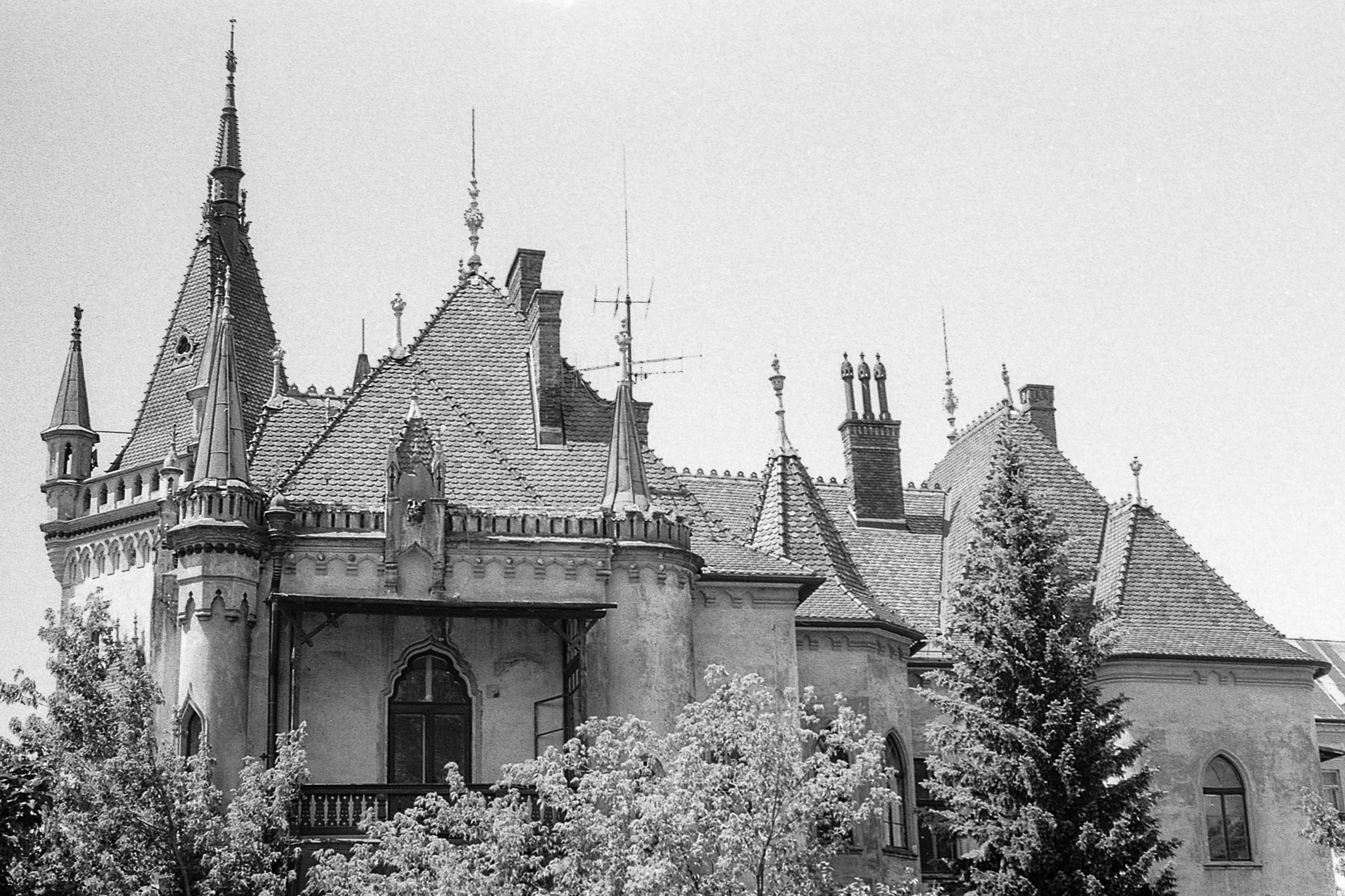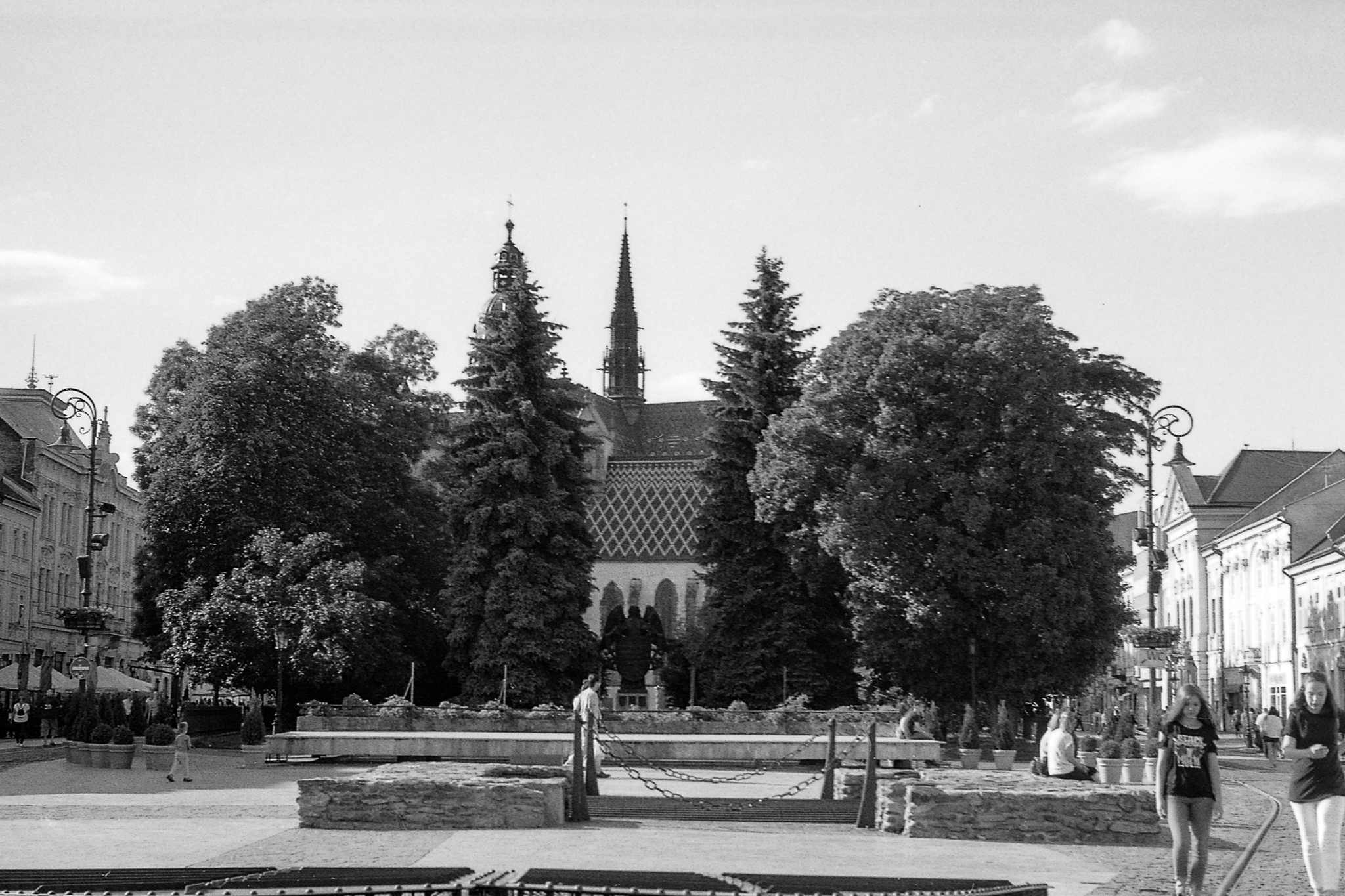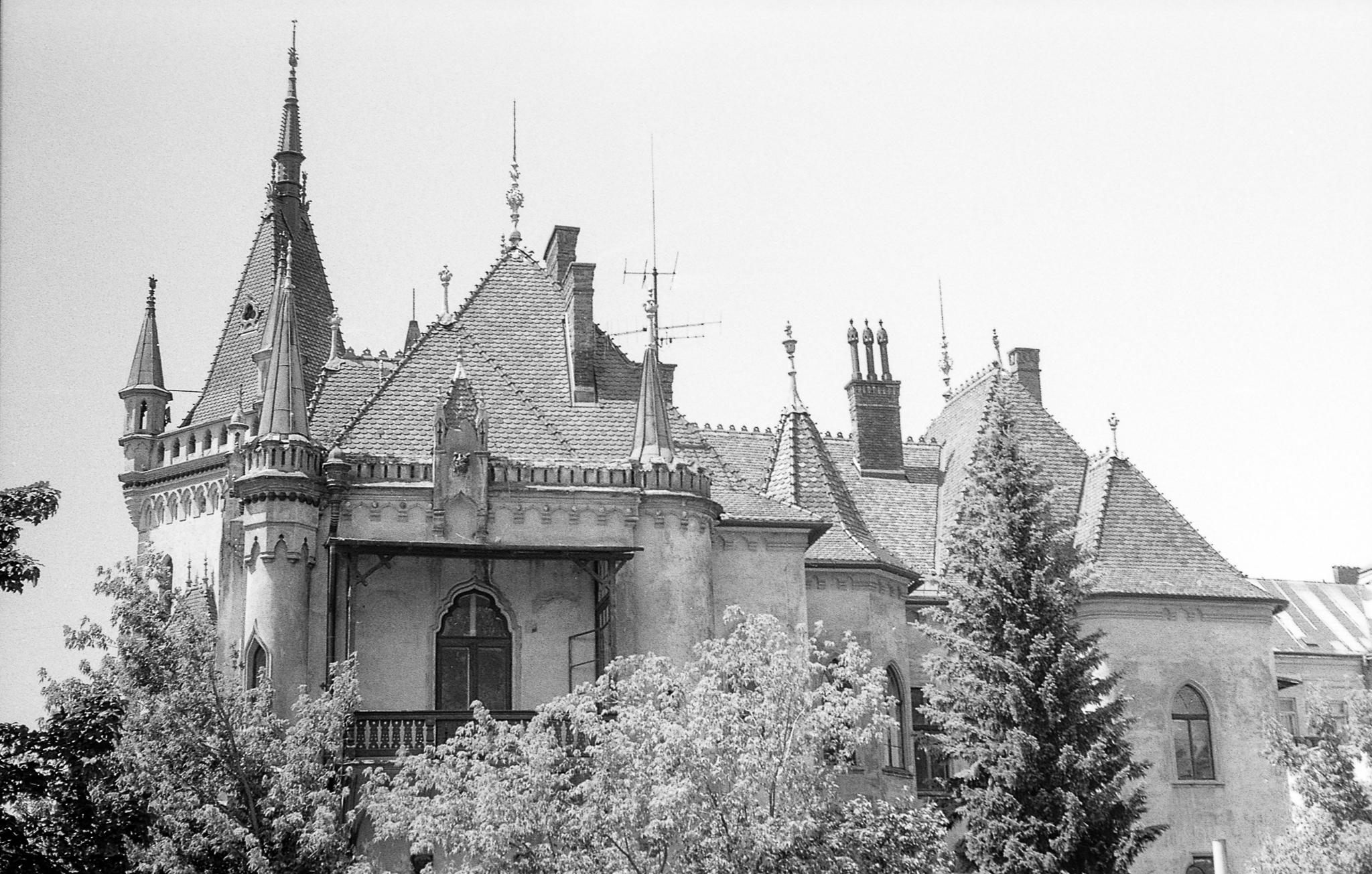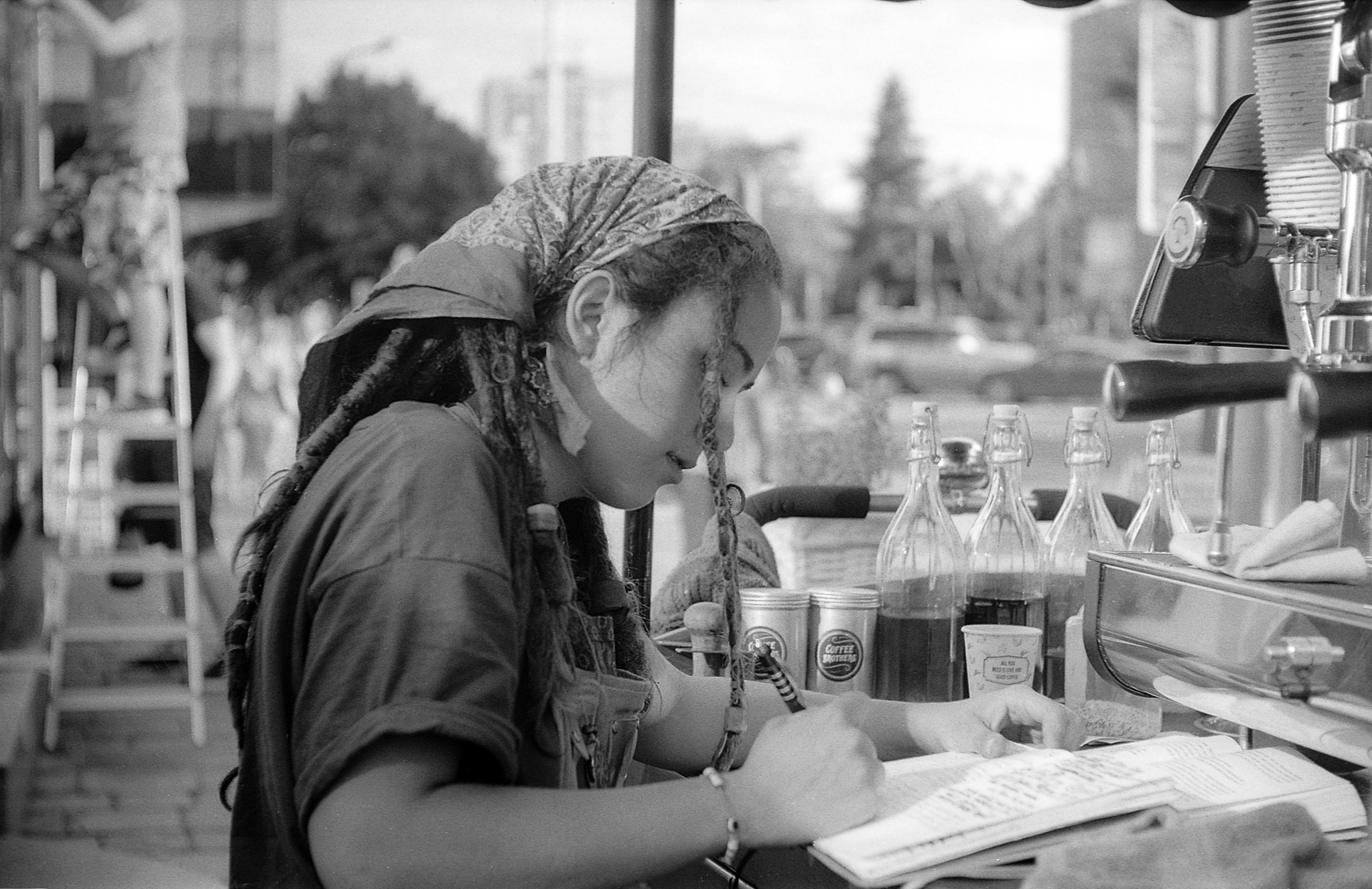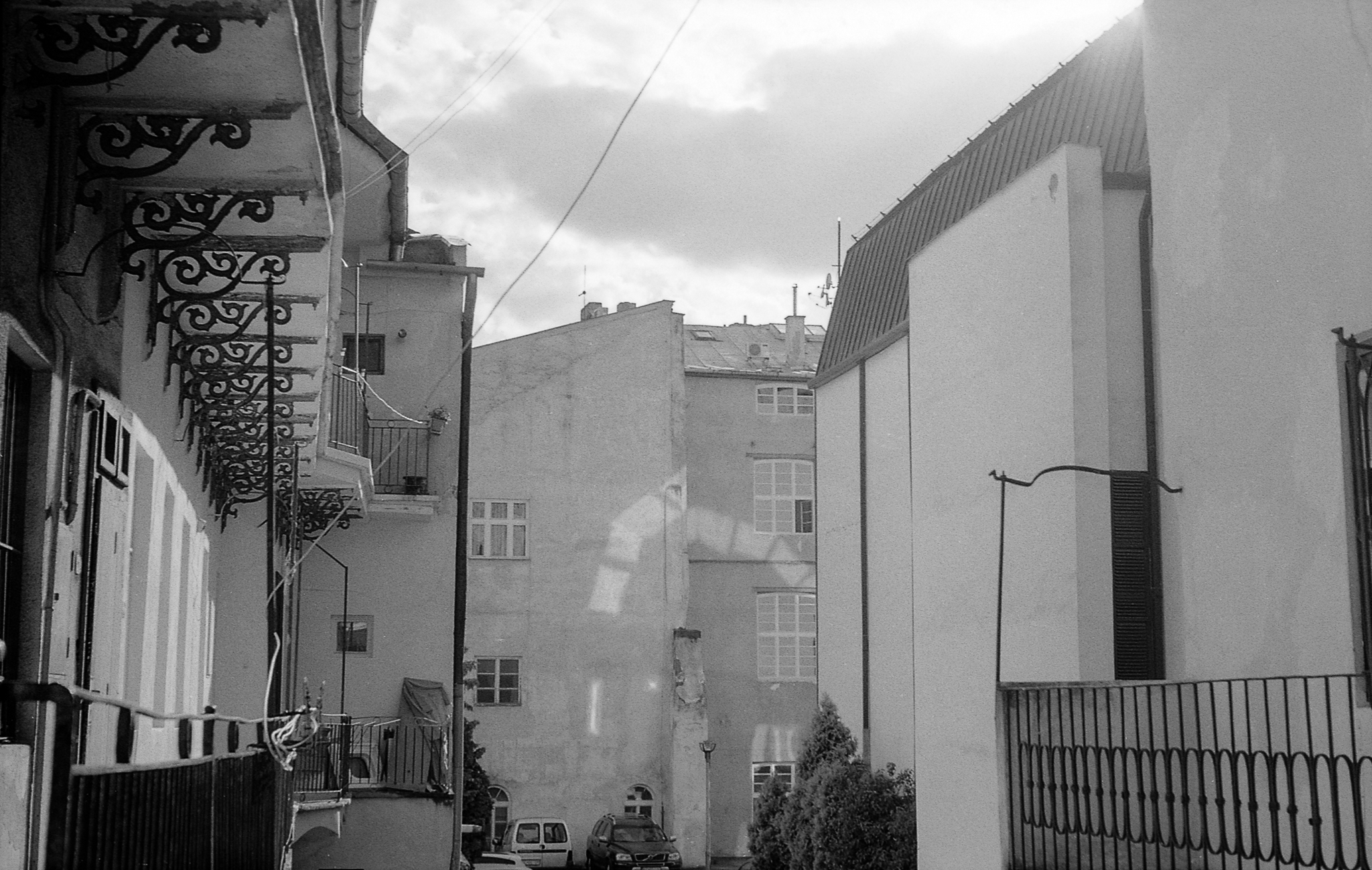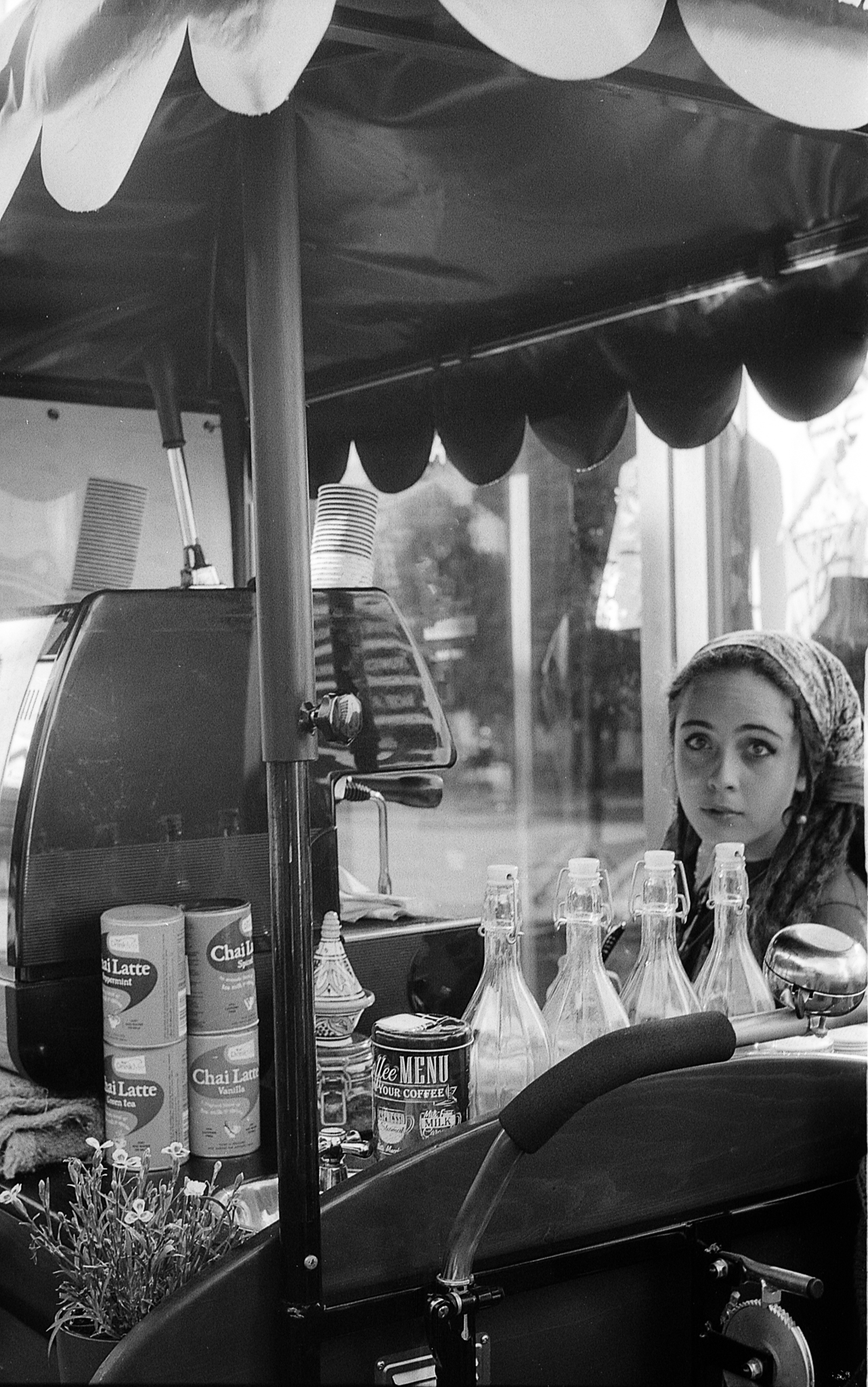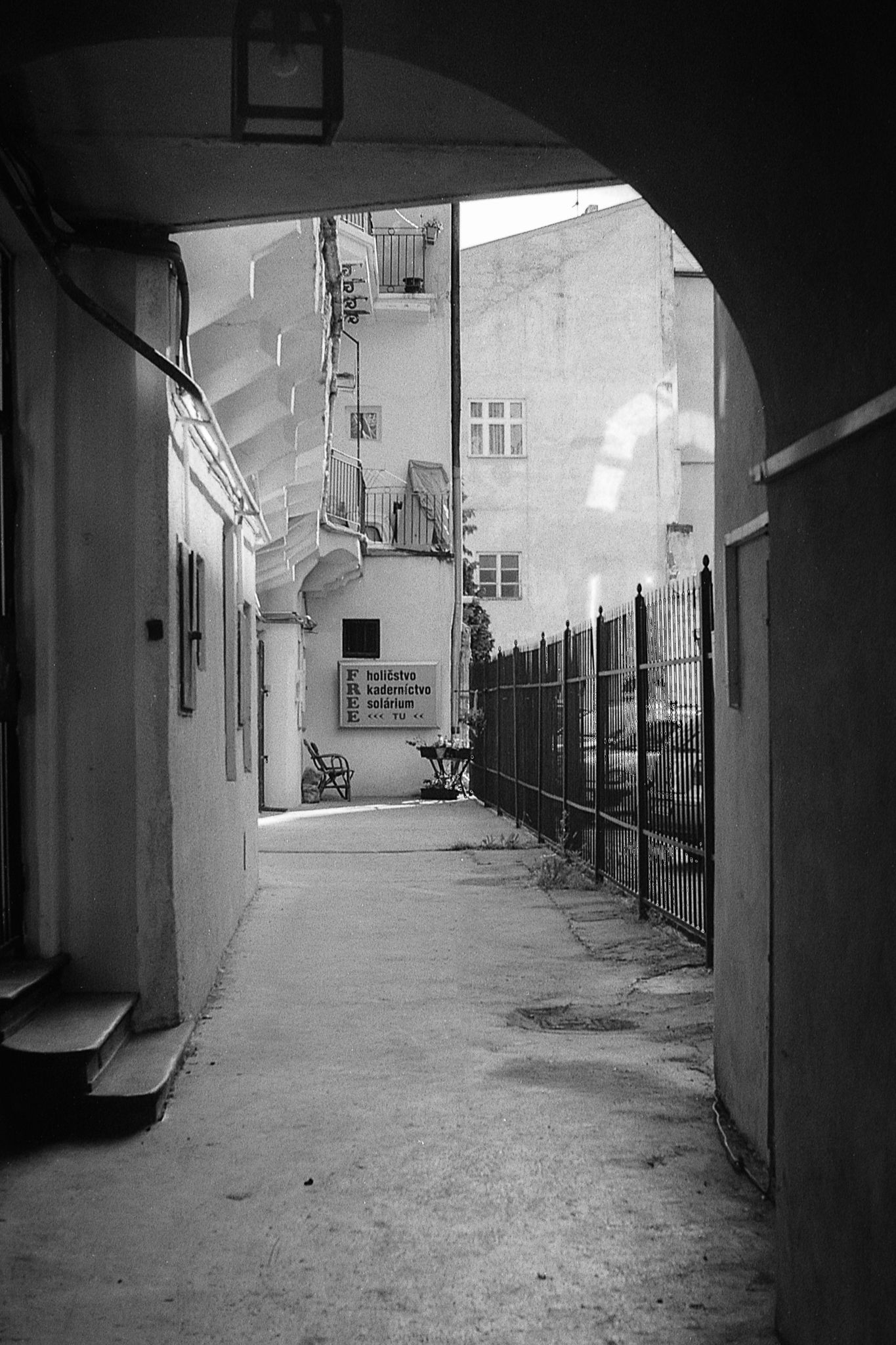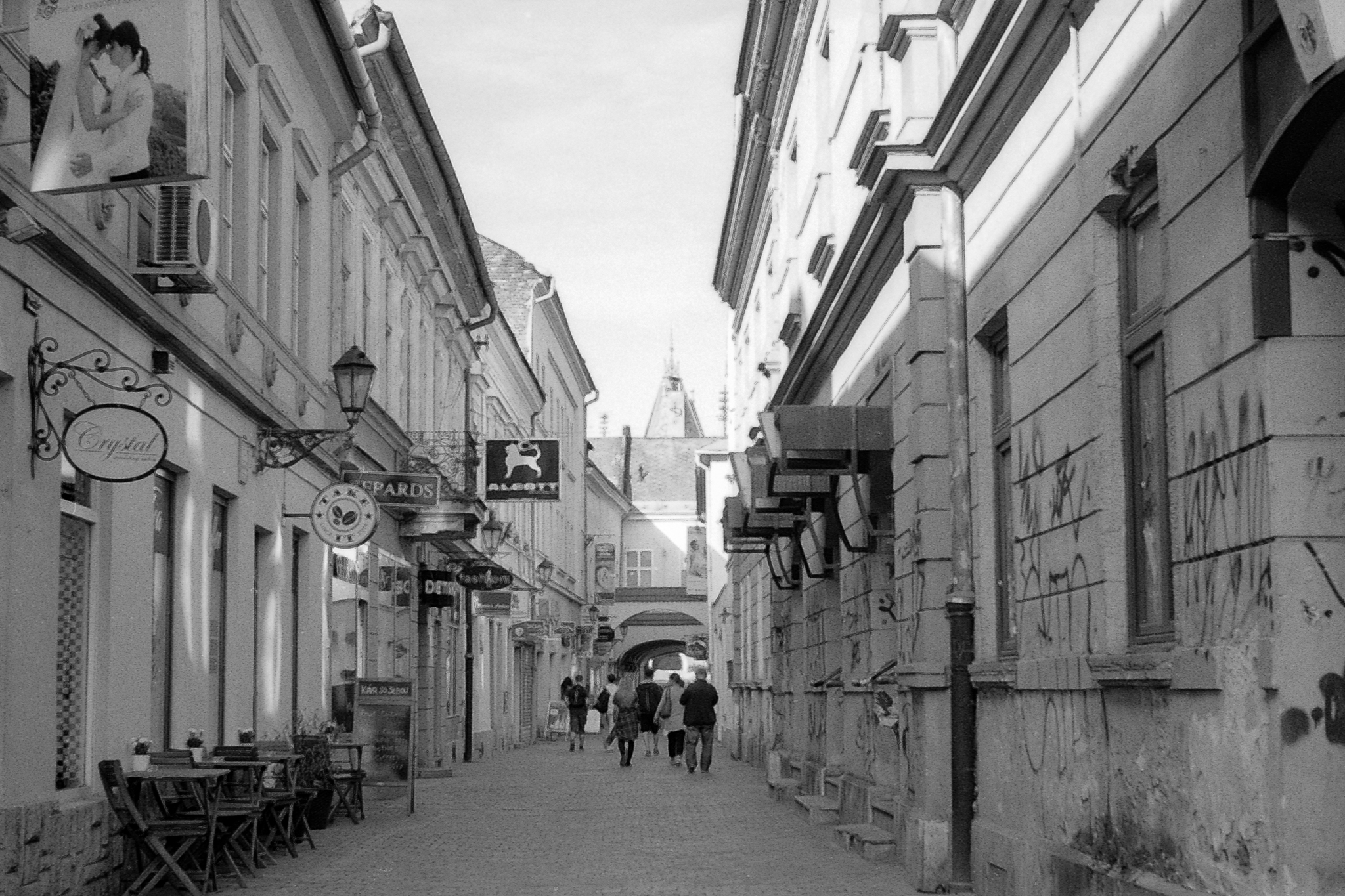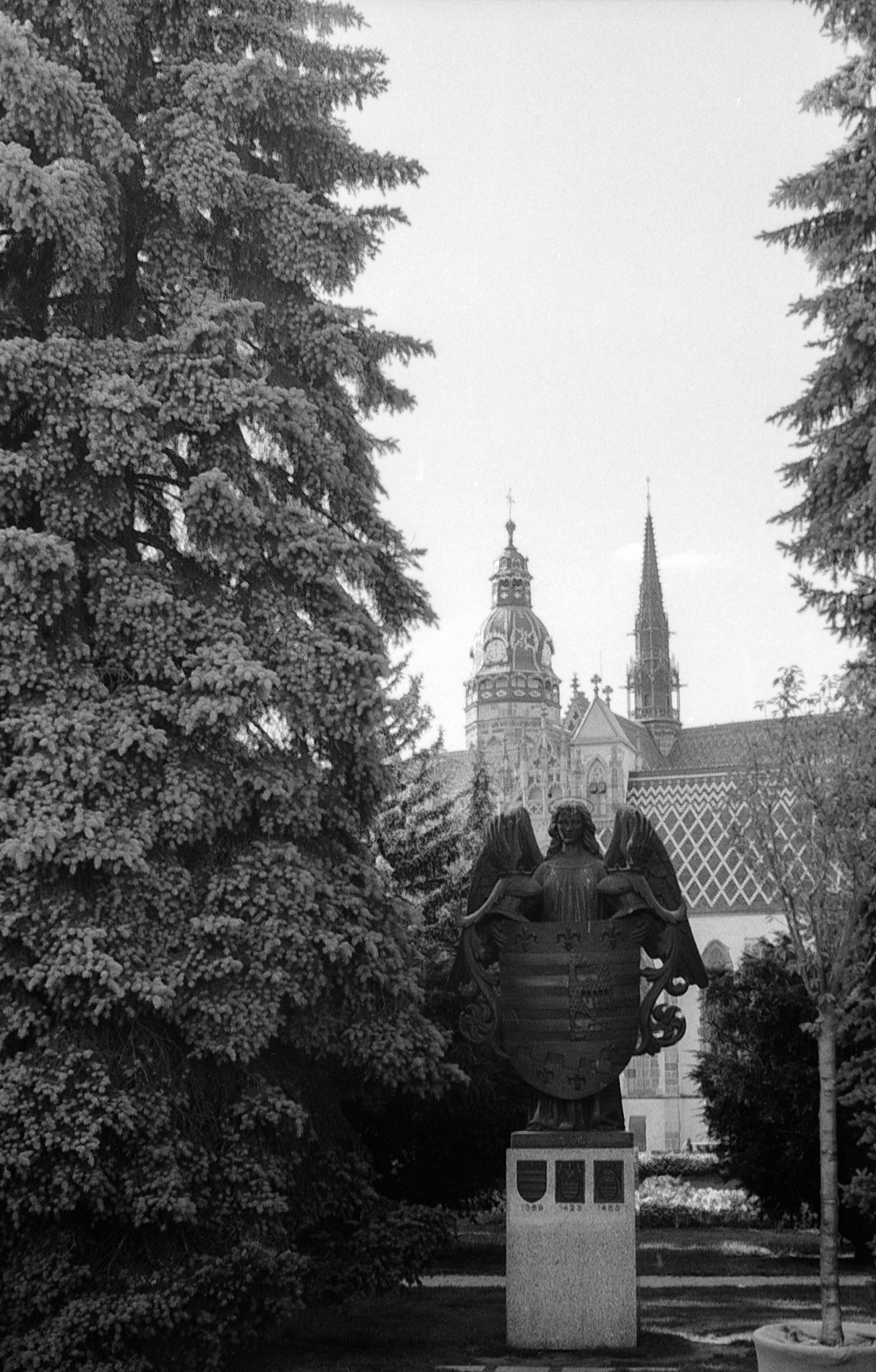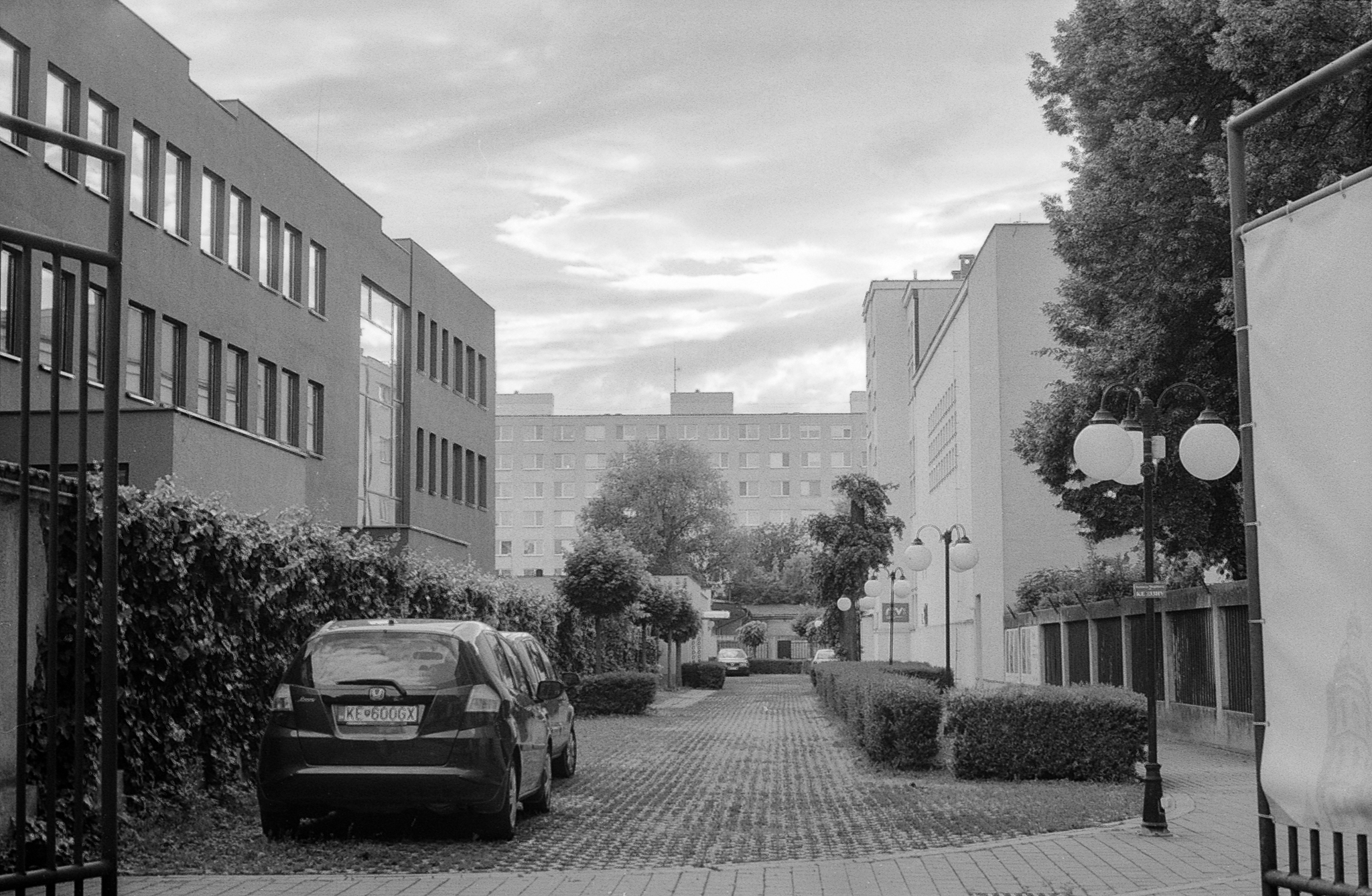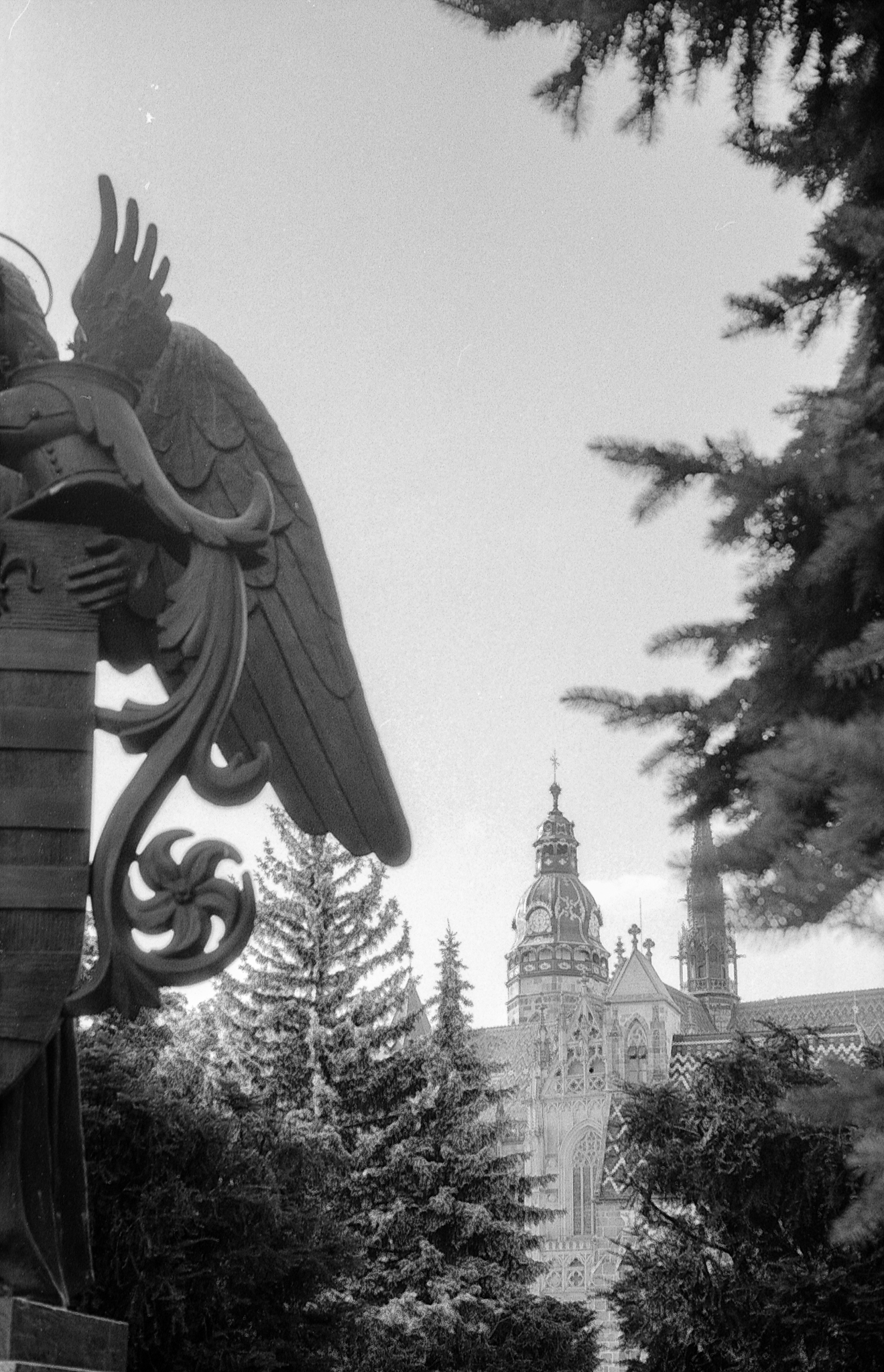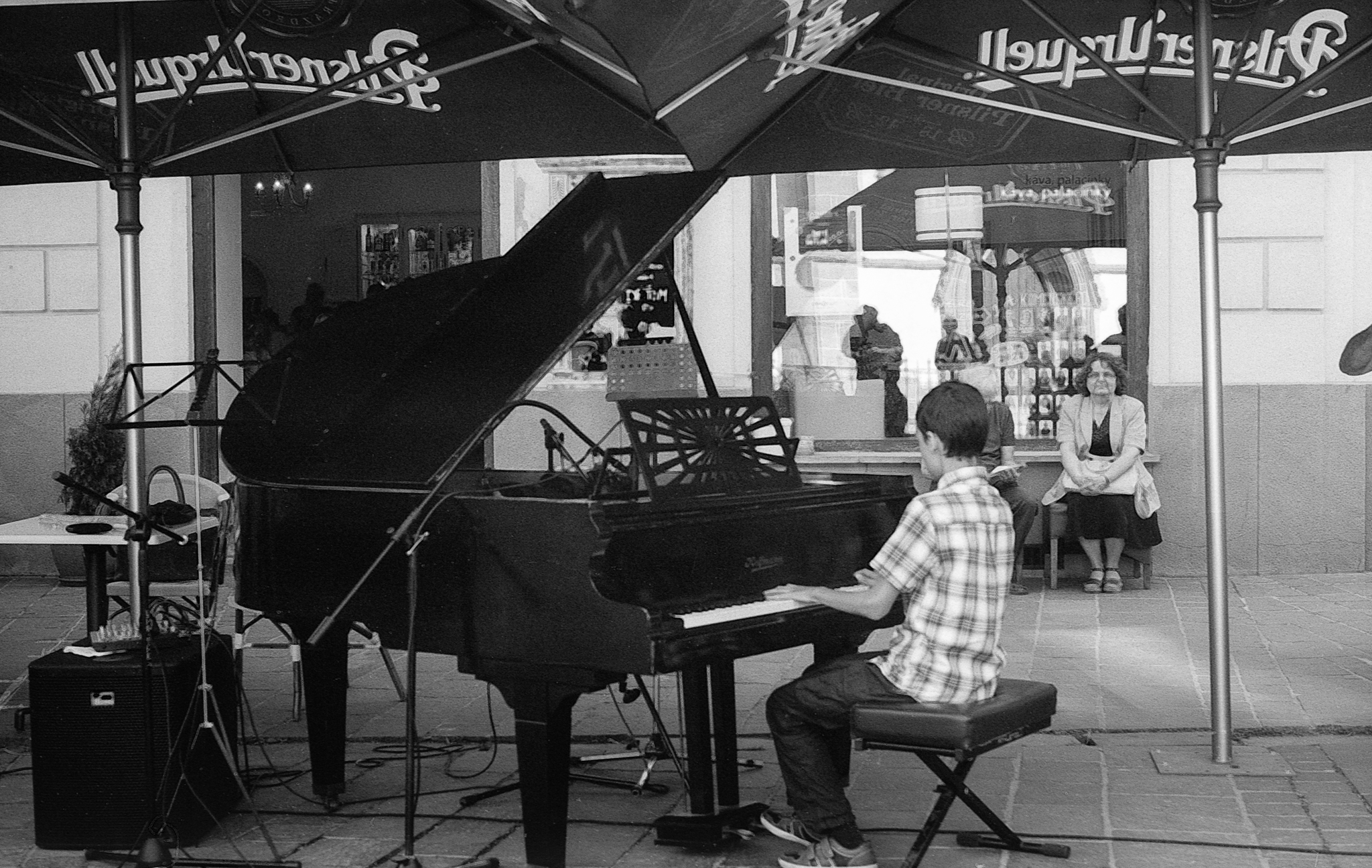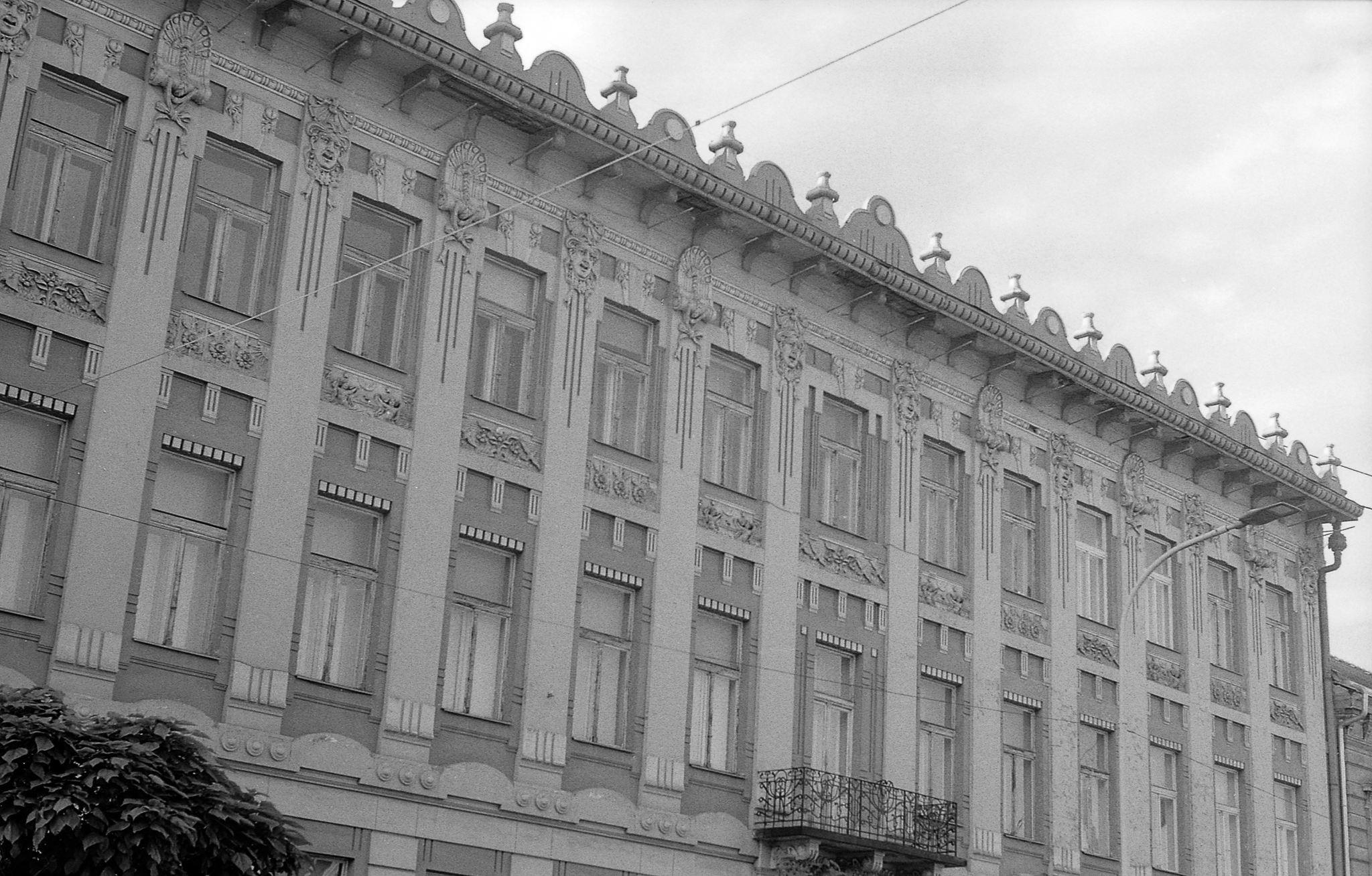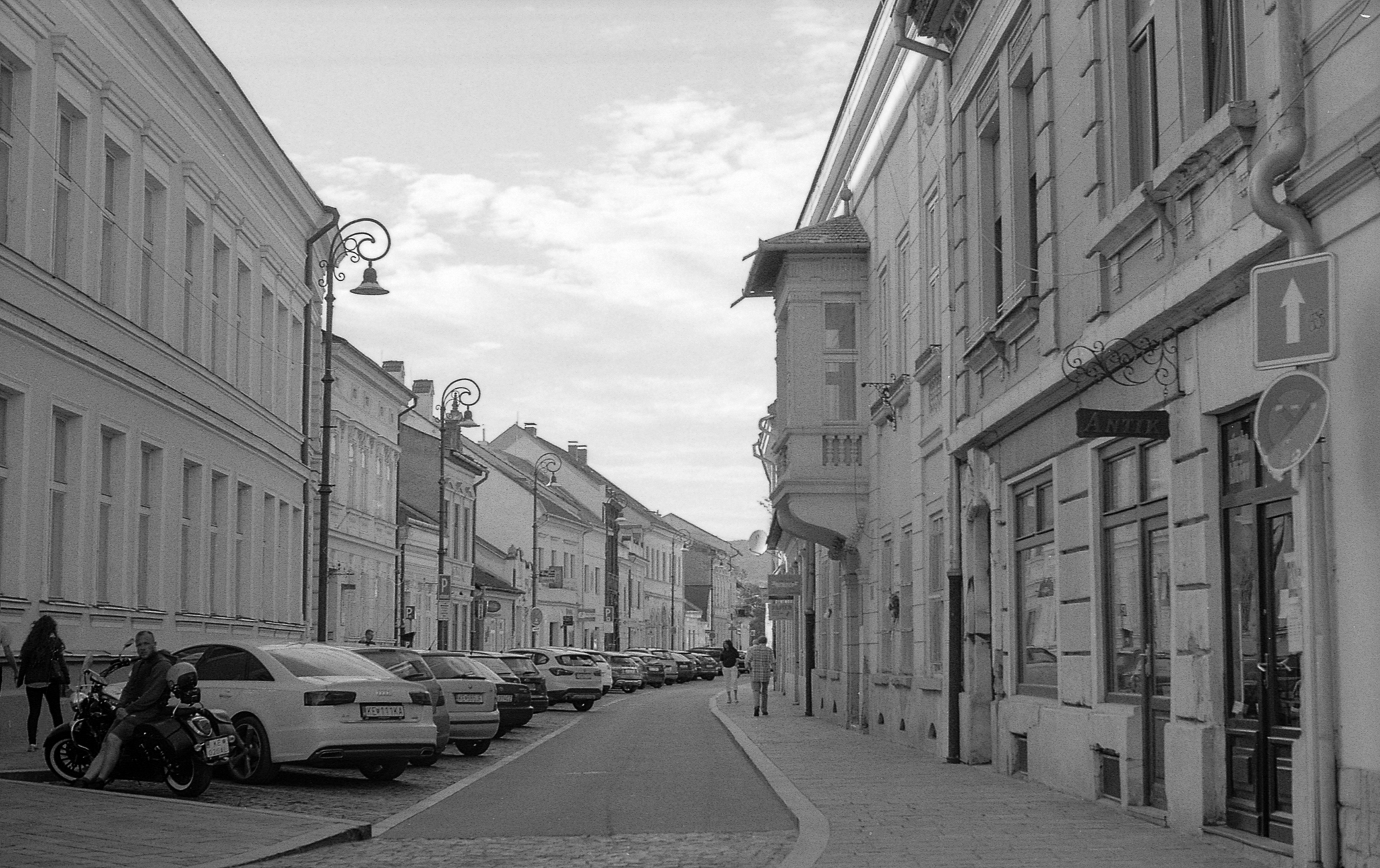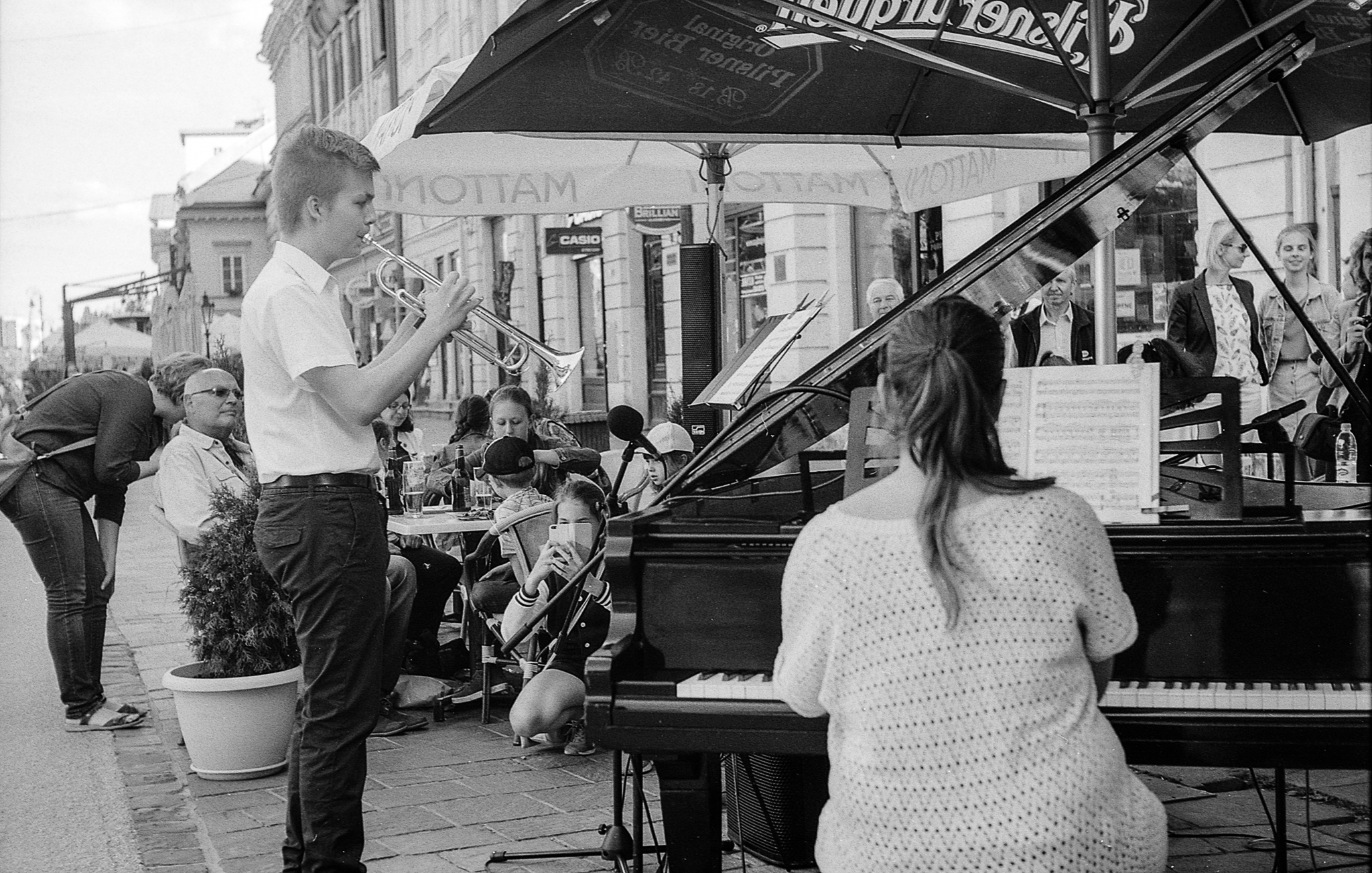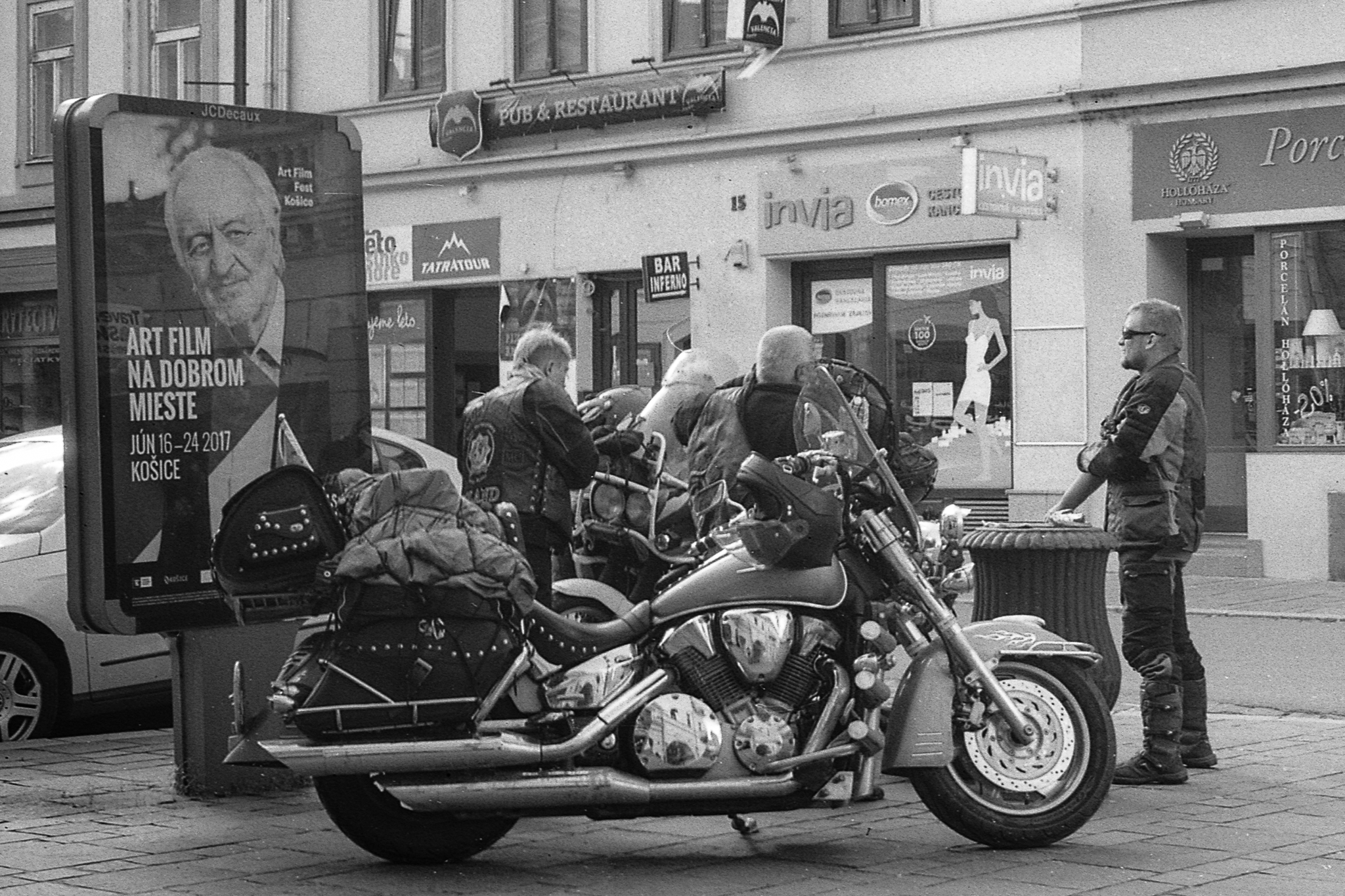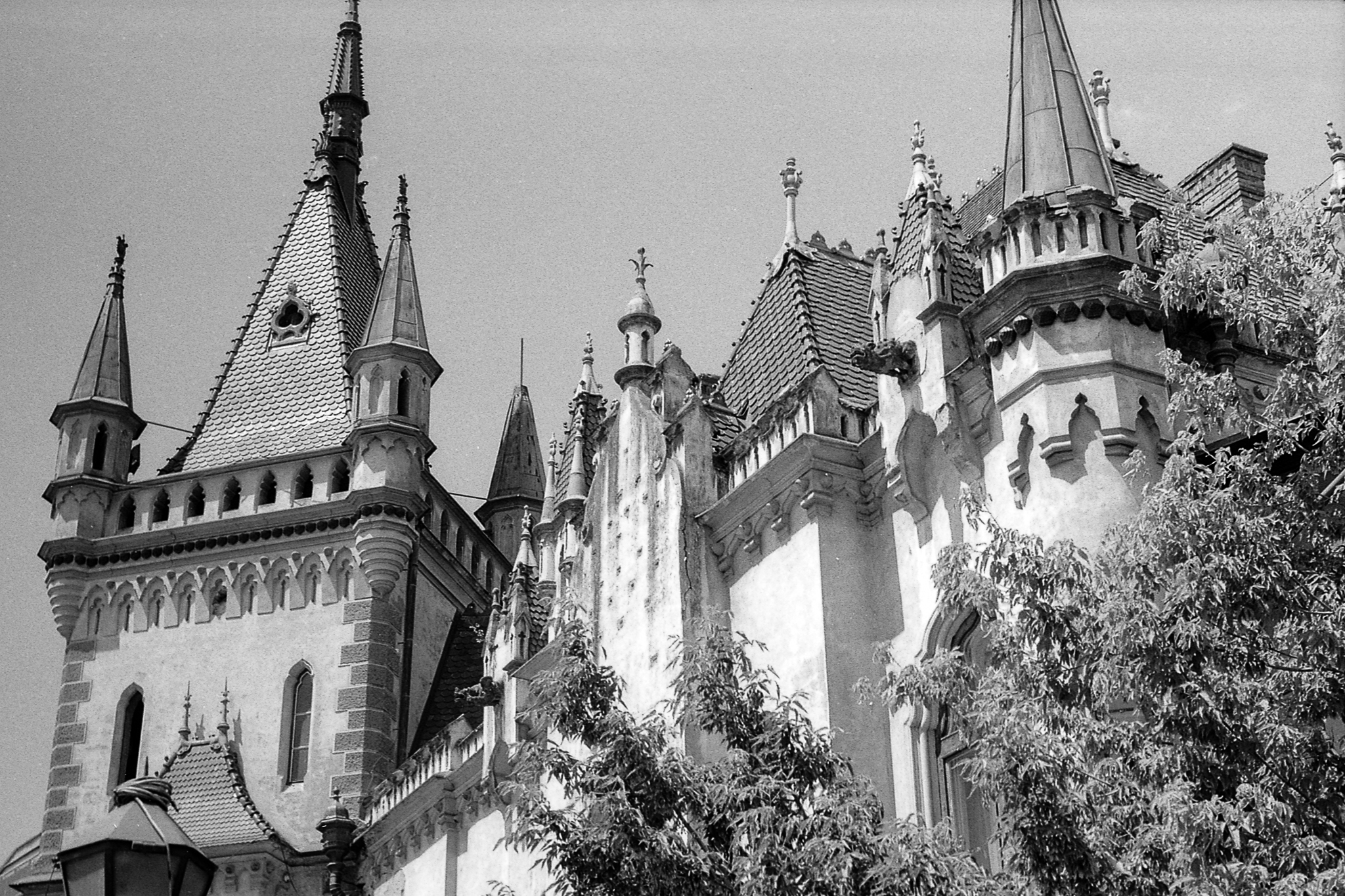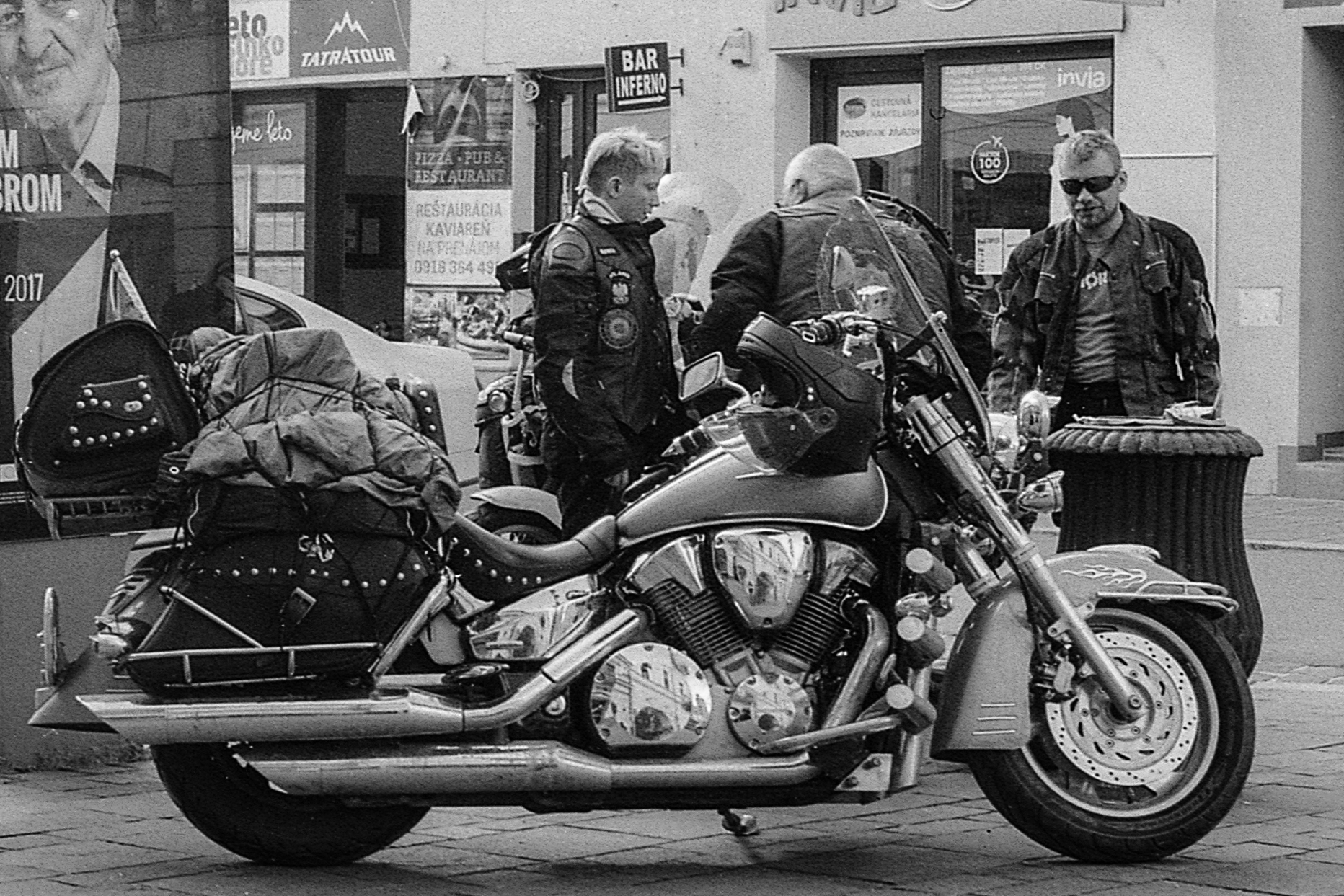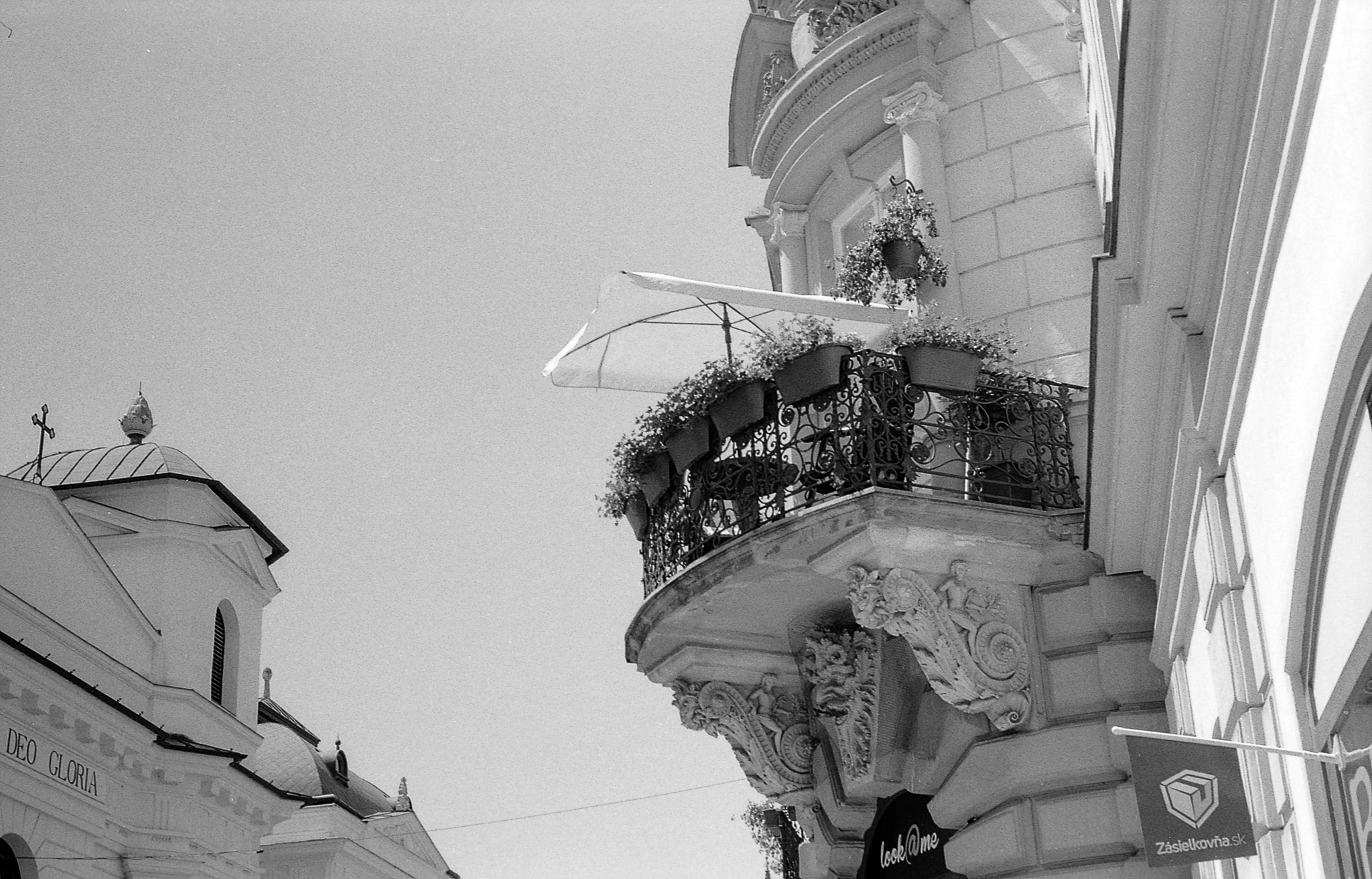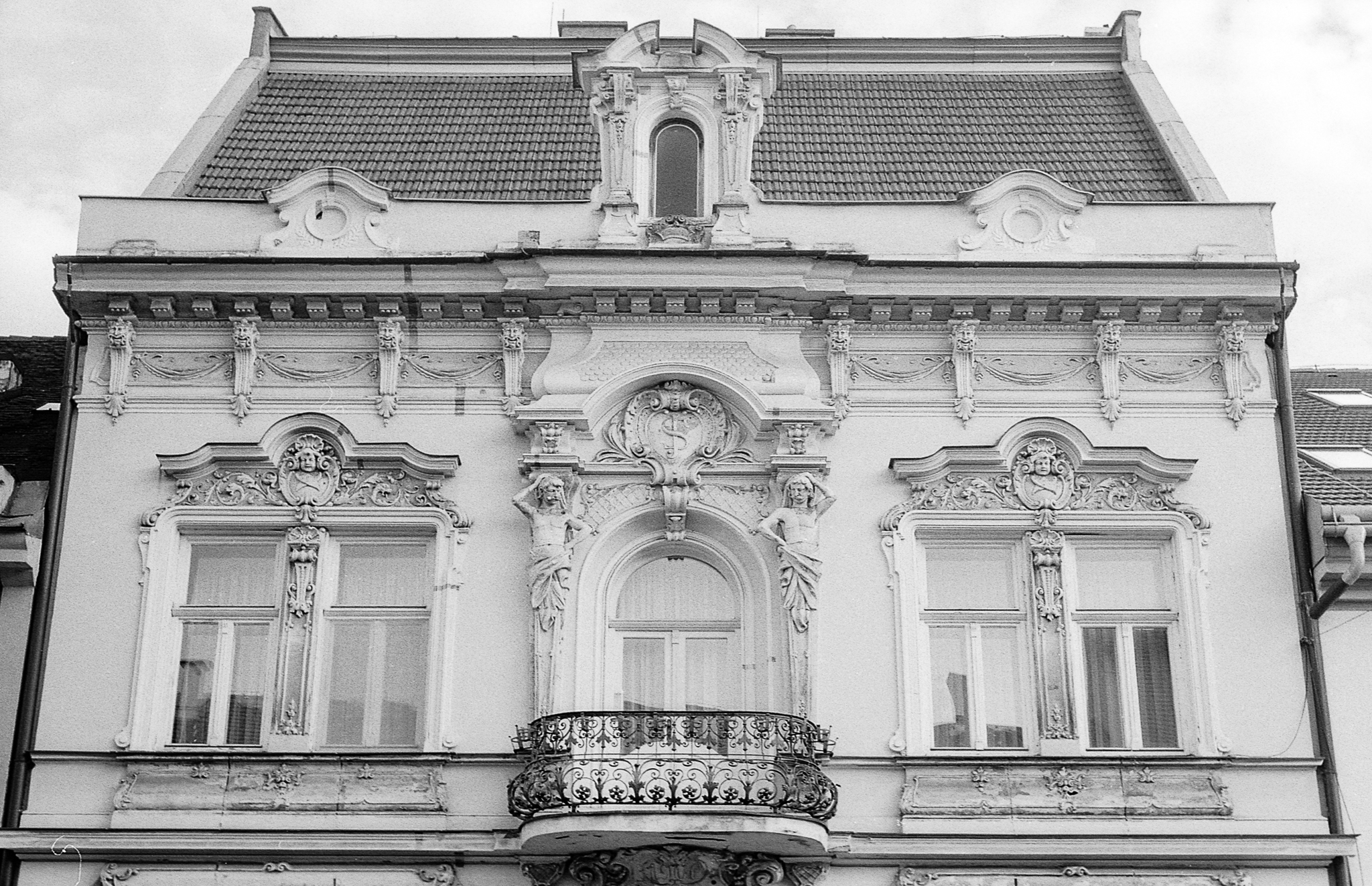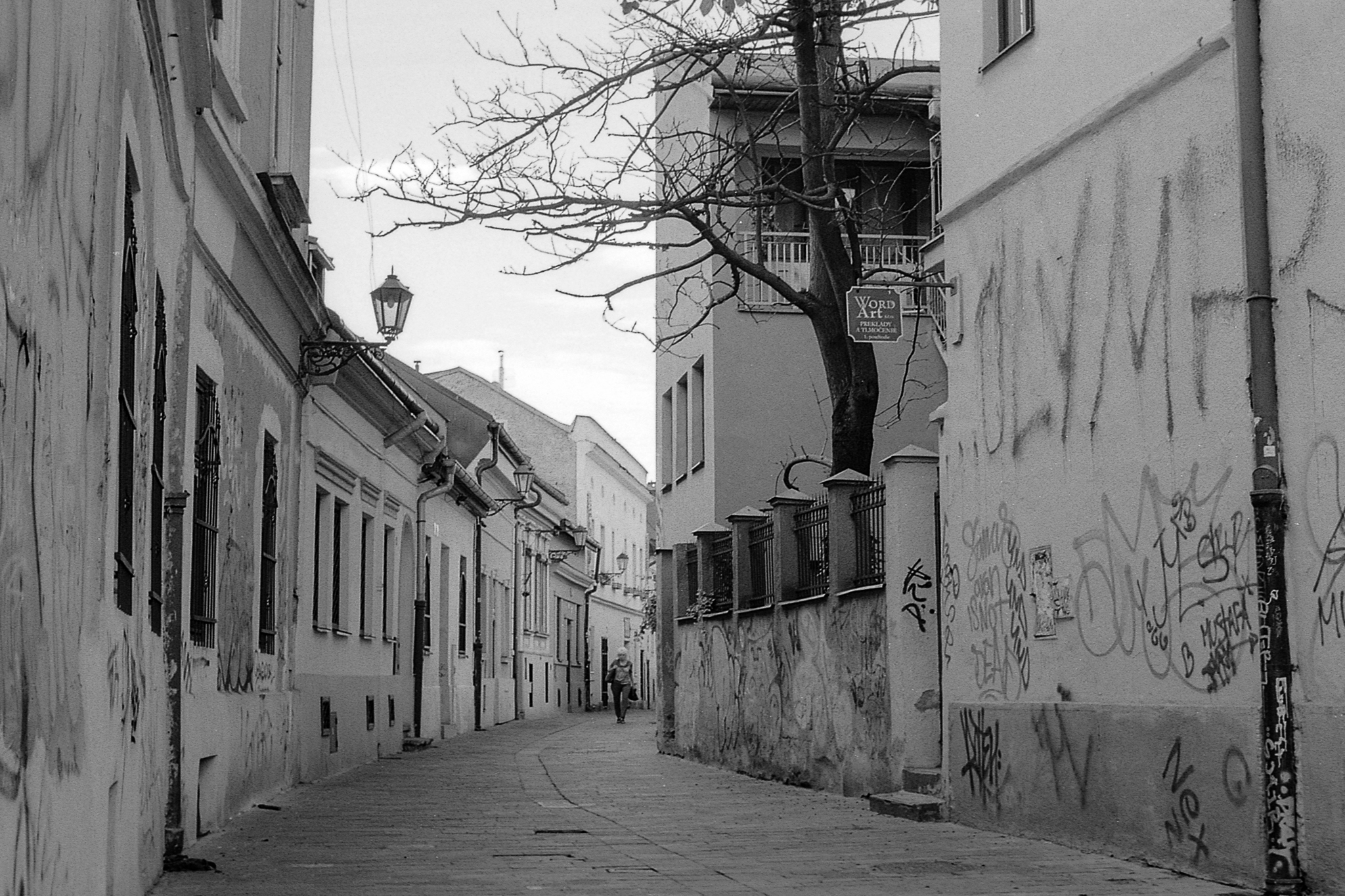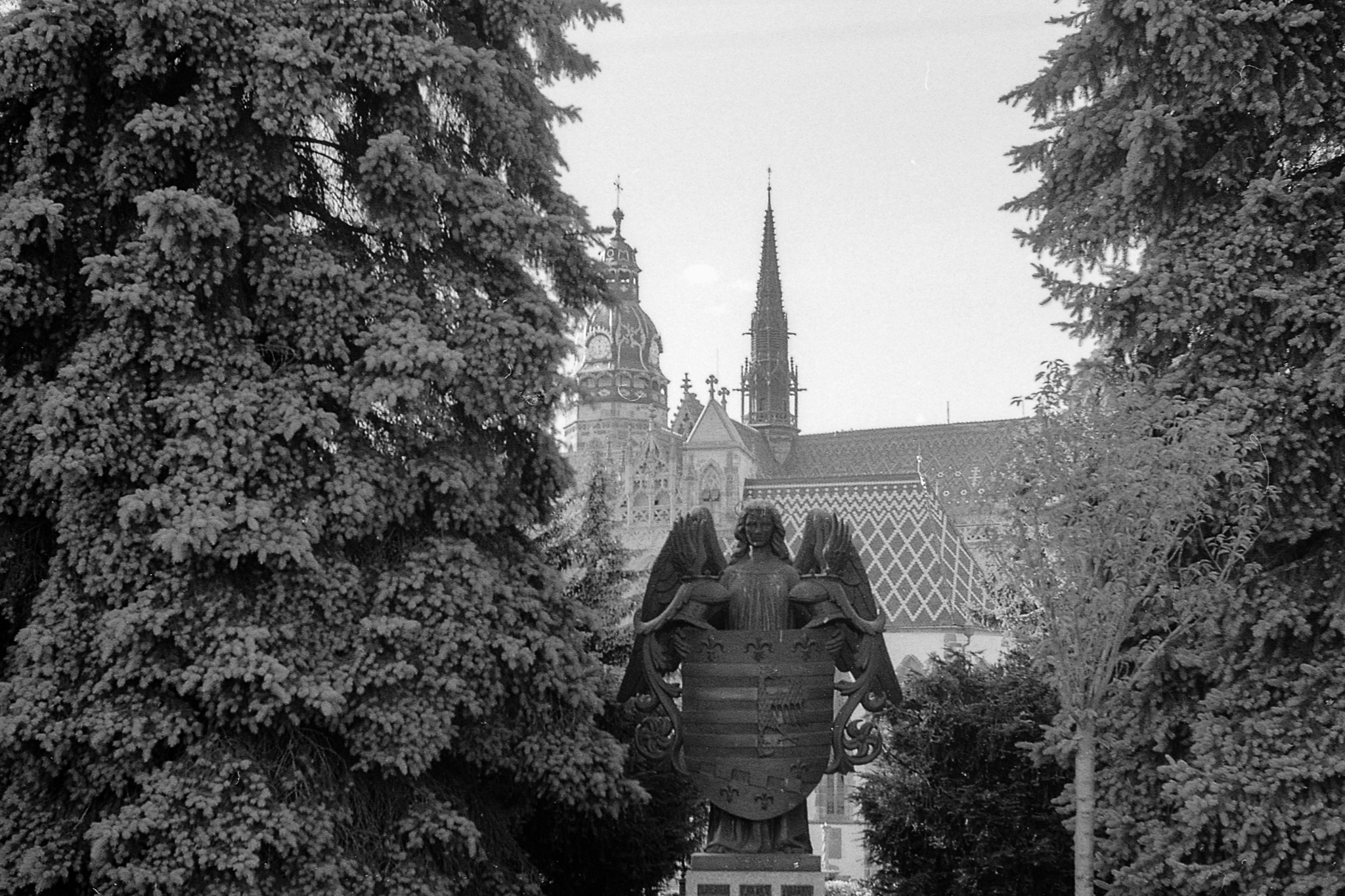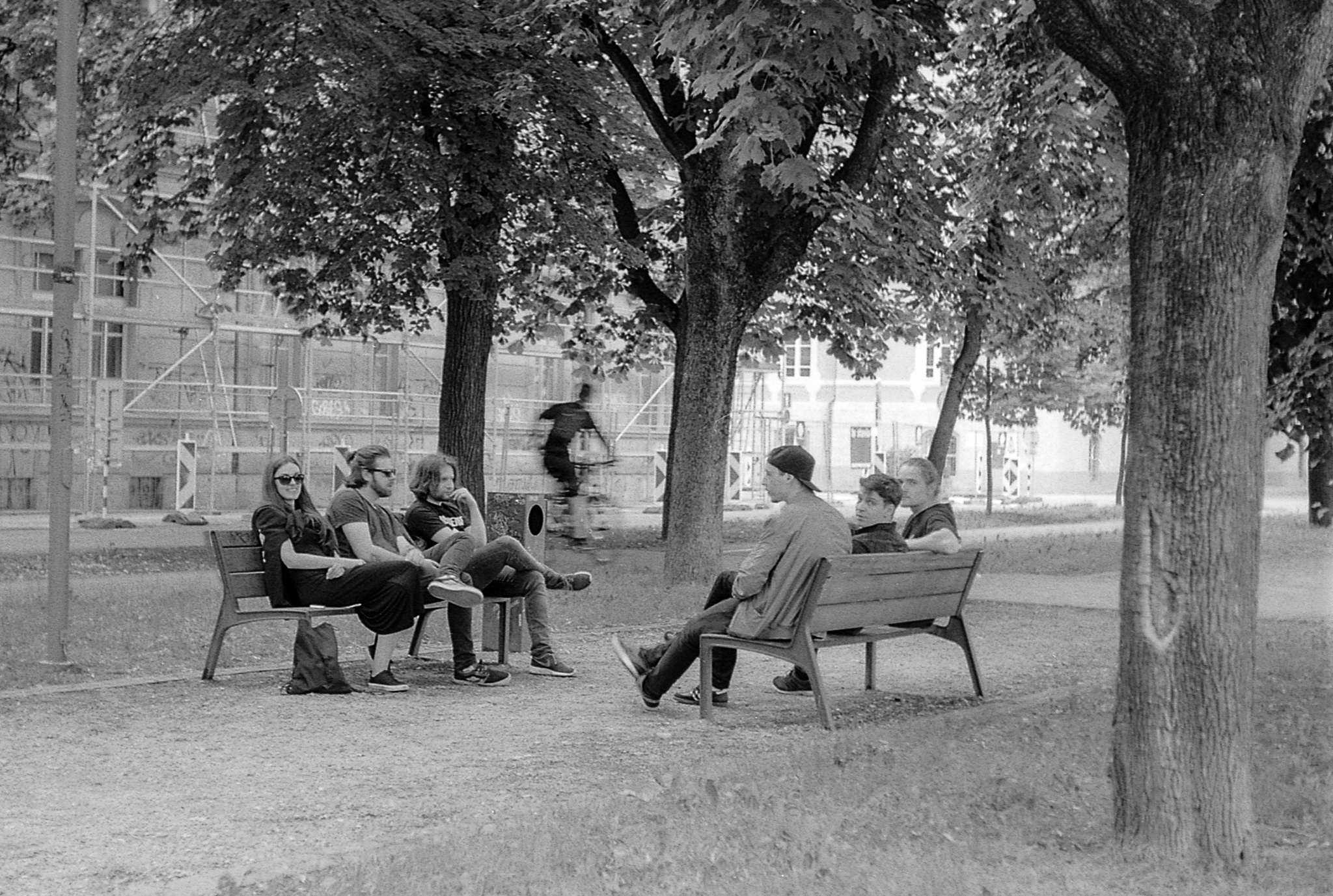The Praktica FX series was a popular but short lived range of SLRs from the late 1940s until the late 1950s.

Mine is one of the last to be produced before the company dropped the FX range in favour of the more modern L series. As you can see from the pictures, the thing that sets it apart from most other 35mm SLRs is the waist level finder instead of the more usual prism. This makes it approximately 100% more awesome, as waist level finders are a lot more fun to use than an eye-level prism. Shooting in portrait mode means focusing first, then turning the camera upright. You cannot realistically see the finder while the camera is in portrait orientation. You can compose while vertical with a ‘sport finder’ which is a simple flap that opens up on the top of the finder cover to give a frame to look through, but it’s tricky to open while the finder hood is flipped up. There was a removable prism that clipped into the finder hood, available as an option for the camera but mine didn’t have one, and I’m sceptical that a  clip-in prism would allow for accurate focusing anyway. The glass is pretty dim compared to the big finders I’m used to on medium format cameras and there is no split circle, but there is a fold-up magnifier inside the hood to help with focus.
clip-in prism would allow for accurate focusing anyway. The glass is pretty dim compared to the big finders I’m used to on medium format cameras and there is no split circle, but there is a fold-up magnifier inside the hood to help with focus.
The usual Praktica/Pentacon design tics are present here, most obviously the front-mounted shutter button, but also the leatherette cover on the base plate, and the angular top plate. Control-wise it’s a bit of a mixed bag. The front-mounted button is fine, especially as you don’t hold the camera up to your face so you get a good view of all the controls while it’s in use. The shutter speed control however is super fiddly. While it has a decent range of speeds (1/500 to 1/2 plus B), these are split into two groups, a fast set with black numbers and a slow set with red ones. B is apparently a fast number. There is a crown in the centre of the shutter speed button that switches between the red and black scale then, to set the correct speed, you have to lift the outside of the ring and put the marker next  to your desired speed. 1/25 and 1/2 are on the same stop of the dial but 1/25 is on the black range and 1/2 is on the red. You can set the crown to a range and pick a shutter speed that isn’t part of that range but the camera doesn’t like that at all, there’s a lot of clockwork whirring and the shutter opens for an apparently random length of time. The rest of the top plate is fairly normal, there’s a large rewind knob on the left balanced by an equally large winding on knob on the right. A small button between the winding know and the shutter speed selector disengages the sprocket for rewinding.
to your desired speed. 1/25 and 1/2 are on the same stop of the dial but 1/25 is on the black range and 1/2 is on the red. You can set the crown to a range and pick a shutter speed that isn’t part of that range but the camera doesn’t like that at all, there’s a lot of clockwork whirring and the shutter opens for an apparently random length of time. The rest of the top plate is fairly normal, there’s a large rewind knob on the left balanced by an equally large winding on knob on the right. A small button between the winding know and the shutter speed selector disengages the sprocket for rewinding.
The FX name comes from the fact that the camera has two sync sockets, one for the older style bulbs that released their light more slowly (f), and one for the then-new electronic flashes that were much faster to fill the scene with light (x). Both are limited to a sync speed of 1/40 however, thanks to the all-mechanical cloth shutter. It wasn’t until the advent of electrically operated vertical shutters in the late 1970s that focal plane shutters were capable of flash sync at speeds over about 1/60.
The lens that came with mine is a very solid feeling CZJ Tessar 50mm f/2.8 lens. This is all aluminium with an anodised front ring. It’s a little battered but seems to be sharp still although it’s uncoated so you’ll not want to have the sun anywhere in your field of view. It has a very long travel for focusing which allows for very precise focus if you can see the rather dim ground glass clearly enough. There’s an automatic diaphragm and a spring loaded focus return which seems a bit redundant. The aperture ring needs to be  pushed in and turned until it reaches the required stop to set the aperture, if you just turn it then it will open up for focusing and then the spring will return it to the pre-selected aperture when you let go. That would be a good feature on the many Soviet M42 lenses that don’t have an automatic diaphragm, heaven knows I’m always forgetting to stop down Helios lenses after focusing. The positive aperture selection does mean however that it’s not possible to set anything except full stops and the actual position of the stop is not always completely in line with the number markings, sometimes you have to hunt around a bit to find the notch.
pushed in and turned until it reaches the required stop to set the aperture, if you just turn it then it will open up for focusing and then the spring will return it to the pre-selected aperture when you let go. That would be a good feature on the many Soviet M42 lenses that don’t have an automatic diaphragm, heaven knows I’m always forgetting to stop down Helios lenses after focusing. The positive aperture selection does mean however that it’s not possible to set anything except full stops and the actual position of the stop is not always completely in line with the number markings, sometimes you have to hunt around a bit to find the notch.
I enjoyed shooting a couple of test rolls with this and it’s a cool camera to use for street photography as it’s small and the finder means it can be used less obtrusively than a regular SLR or rangefinder. It’s in reasonably good shape despite its age and I’ll probably use it some more as a travel camera for day trips.

